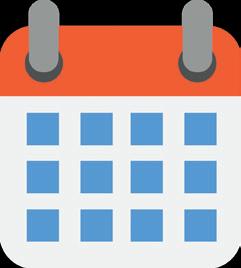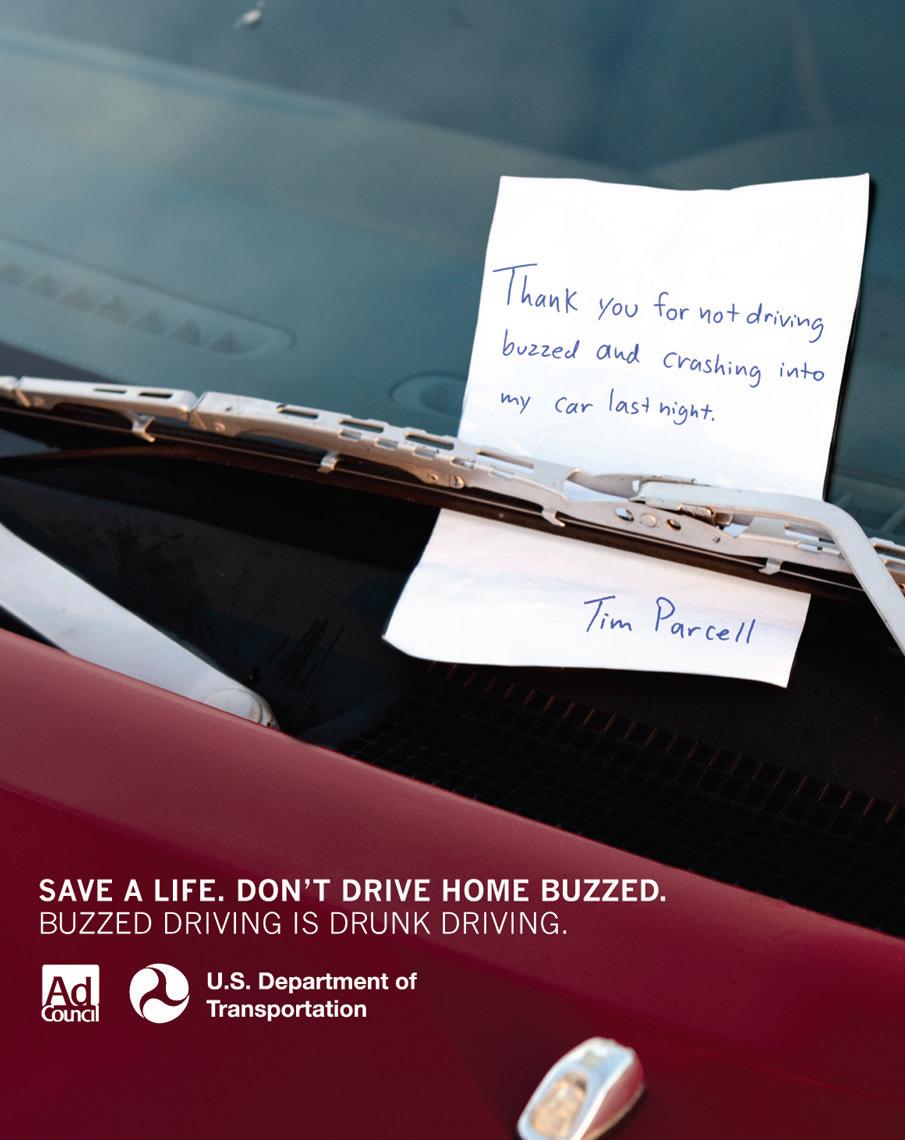








Sponsored by JPMorganChase
Getting in the habit of saving money is important, as it helps lead to creating a financial cushion to cover future expenses. Saving is not easy, especially when everyday products are at an all-time high given recent years’ rising inflation and simply suggesting cutting back on small indulgences can be irritating.
Thankfully, there are options to help saving money become more of a habit to better equip you for life’s unexpected needs. Before determining how much to start saving, first understand money coming in and money coming out – like cost of rent, food, car or public transportation, utilities, and other direct payment expenses, such as subscriptions to various streaming services. Apps can help track these recurring expenses, making it a good time to reconsider or renegotiate them.
Once you’ve understood your monthly budget, check what’s remaining to determine a doable amount to start setting aside each month. When it comes to saving, there are various strategies, from keeping a certain amount in your bank account each week, to automating transferring money from your checking to your savings account each month. You can also save for something specific, like a vacation, home project, or a splurge you’ve had your eye on for a while. Here are a few saving account options to consider:
Standard Saving Accounts are the most common, easy to access and typically open. Savings accounts can often be accessed and managed online or through the bank’s mobile

app, which can make things easier. Before choosing an account that best suits your needs, ask if there is a monthly service fee and potential ways to waive the fee.
Money Market Accounts are similar to savings accounts, but the customer receives more interest on their money, something that varies with banks. They usually require a minimum balance.
High Yield Savings Accounts are increasingly popular, often coming with higher interest rates, making them suitable for short-term savings goals. They work a lot like the typical savings account, allowing for deposits and withdrawals, but there may be transaction limits and minimum balance requirements. They are also protected up to $250,000 at FDIC insured banks.
Certificates of Deposit (CDs) are highly sought after when interest rates are favorable, but you must commit to leaving the money deposited in the CD untouched for the agreed upon term, which is usually months or years. There may be minimum deposit requirements, but they offer returns so are useful for shortterm goals, such as the down payment on a house or car.
Long-Term Accounts provide an opportunity to accumulate returns over years, depending on how the markets fluctuate. These accounts are designed for a specific financial goal and have tax advantages. Consult your financial institution for long-term savings account options, some of which may include: • 529 Plans: Saving over the years
to pay for the education of a child, grandchild, or niece/nephew. Savings are tax-deferred and can only be used for the beneficiary’s education, whether for college or another educational institution.
• 401(k): Retirement savings accounts your employer offers. Contributions are usually made monthly (a percentage of the salary) via direct deposit. There are limits to how much you can contribute.
• IRA: There are various types of individual retirement Accounts (IRAs), offering another personal retirement savings option. Contributions are limited, not necessarily offered by an employer, and like the 401(k), they are only used after retirement.
Be sure to ask your bank or financial advisor whether the account you plan to open has a monthly deposit or balance minimum, or any additional requirements or fees. For more budgeting and savings tips, visit chase. com/financialgoals.
+++ For informational/educational purposes only: Views and strategies described may not be appropriate for everyone and are not intended as specific advice/recommendation for any individual. Information has been obtained from sources believed to be reliable, but JPMorgan Chase & Co. or its affiliates and/or subsidiaries do not warrant its completeness or accuracy.
Deposit products provided JPMorgan Chase Bank, N.A. Member FDIC © 2024 JPMorgan Chase & Co.


By Dr. Frances “Toni” Draper
When
forefront. These conditions disproportionately affect us, and it’s important to address them. But true wellness goes beyond just the physical. Our overall wellbeing is deeply connected to our history, culture and experiences. For generations, our
ancestors understood the importance of balancing mind, body and spirit, and it’s time we reclaim that holistic approach. To truly thrive, we need to nurture all parts of ourselves, recognizing that our health depends on it.
This holistic approach isn’t a new concept. Recent studies show that a more comprehensive view of health, one that includes physical, mental and spiritual aspects, leads to better health outcomes. Research from the National Institutes of Health (NIH) emphasizes the link between physical health and mental well-being, while numerous studies published in JAMA Psychiatry reveal how spiritual practices can provide resilience against stress and enhance overall quality of life.
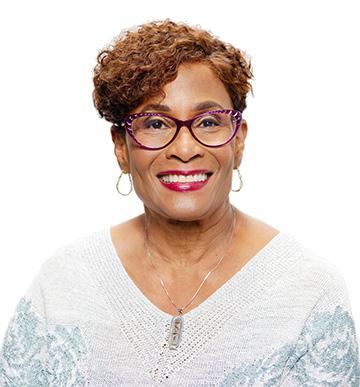
We’ve made strides in addressing health disparities, but there’s more work to be done. In addition to making better food choices and staying active, we need to address the systemic barriers that keep many of us from accessing healthcare or living in environments where good health can thrive.
Dr. Frances “Toni” Draper is the AFRO CEO and publisher. This week, she discusses the importance of having a healthy mind, body and spirit.
rates of these conditions, with Black adults being 60 percent more likely to be diagnosed with diabetes than White adults. However, despite these challenges, we have always found ways to strengthen our bodies.
According to a study published in The Lancet, structural racism continues to affect the social determinants of health, meaning the conditions in which people are born, grow, live and work greatly influence their health outcomes.
peace amid life’s storms. By addressing our mental health, we can break the cycles of stress and trauma and begin the journey toward emotional and physical healing.
Taylor
Afro-American Newspapers
233 E. Redwood Street, Ste. 600G Baltimore, Md. 21202
7. The owner is a Corporation: The AFRO-American Company of Baltimore City, 233 E. Redwood Street, Ste. 600G, Baltimore, Md. 21202.
The following Stockholders own one (1) percent or more of the total amount of stock and their mailing address is above: John J. Oliver, Jr., Trustees of Carl Murphy Estate, Frances L. Murphy and Carlita Jones; Madeline W. Murphy, Arthur Murphy, Camay Murphy, Eleanor Louise Gee Murphy, David V. Lottier, Shawn P. Lottier, Sadie Smith, Virginia L. Parham, June L. Powell, Deborah Stafford, James and Robin Wood, all of Baltimore, MD; Leeland A.M. Jones, Jr, of Buffalo, NY; Charles Perkins, Carlita CMJ Perkins, of Gaithersburg, MD; George Lottier, Daniel H. Murphy, Christopher Lottier, of Atlanta, GA; Laurence Young, Grace Bruce, Madeline M. Rabb of Chicago, IL; Susan M. Barnes of Biloxi, MS; Sharon M. Smith of Oakland, CA; and Benjamin M. Phillips IV of Alanta, GA.
or
and
8.


The body: Our physical foundation Physical health is the foundation of our wellness. From the legacy of survival during enslavement to facing systemic racism, we’ve shown remarkable resilience. Our community continues to battle a high prevalence of chronic illnesses—hypertension, diabetes and heart disease— largely due to social determinants like access to quality healthcare, healthy food and safe places to exercise. The CDC confirms that African Americans have disproportionately higher
Historically, physical labor helped our ancestors maintain their strength, and today, many of our physical expressions—whether through dance, sports, or physical work—remain integral parts of our lives. Even more, the rich tradition of home-cooked meals in Black families, while sometimes heavy on comfort foods, also carries healthy, nutritious legacies that have sustained us. Ingredients like leafy greens, sweet potatoes, and beans are staples in many African-American households and can be optimized to support a healthier diet.

Your History • Your Community • Your News
The Afro-American Newspapers
Baltimore Office • Corporate Headquarters 233 E. Redwood Street 6th Floor, Suite 600G Baltimore, Maryland 21202 410-554-8200 • Fax: 410-554-8213 afro.com
Founded by John Henry Murphy Sr., August 13, 1892
Chairman of the Board/Publisher - Frances Murphy Draper (Publisher Emeritus - John J. Oliver Jr.)
President - Benjamin Murphy Phillips IV
VP of Marketing and Technology - Kevin E. Peck
Director Digital Solutions - Dana Peck
Receptionist - Wanda Pearson - 410-554-8200, ext. 246
Director of Operations
Andrè Draper - 410-554-8200
Director of Finance
Bonnie Deanes - 410-554-8242
Executive Director/Director of Advertising Lenora Howze - 410-554-8271 - lhowze@afro.com
Director of Community & Public Relations
Diane W. Hocker - 410-554-8243
Editorial Managing Editor - Alexis Taylor - 410-554-8257
Editorial Assistant - Ama Brown-Parson
Archivist - Savannah Wood- 410-554-8277
Baltimore Circulation/Distribution Manager Andrè Draper - 410-554-8200
Production Department - 410-554-8200
Washington Office 1140 3rd Street, N.E., 2nd Floor Washington, D.C. 20002-6723 202-332-0080 • Fax: 410-554-8213
(Washington Publisher Emerita - Frances L. Murphy II)
Director of Operations - Andrè Draper - 410-554-8200
Customer Service, Home Delivery and Subscriptions: 410-554-8200
Taking care of our physical health not only helps us live longer but improves our overall quality of life. It gives us the energy and strength to tackle challenges and enjoy the things that matter most.
The mind: Our Mental Foundation Mental health in the Black community has long been a taboo subject. For generations, we were told to “tough it out” or “just pray about it.” While prayer is undoubtedly powerful, this notion that we must always appear strong has contributed to unspoken struggles with depression, anxiety, and chronic stress. Mental health issues often go untreated because of stigma or lack of access to mental health services. A 2021 report by the U.S. Department of Health and Human Services found that only one in three African Americans who need mental health care actually receive it.
This reluctance to seek help has roots in our history. The mistrust of healthcare systems, rooted in systemic racism and medical malpractice (such as the infamous Tuskegee Syphilis Study), still lingers today. Many of us still believe that seeking mental health support is a sign of weakness or that our problems aren’t severe enough to warrant professional attention. But mental health, just like physical health, requires care.
Chronic stress and trauma—whether from daily encounters with racism, economic strain, or family challenges—take a toll on our minds. Research shows that untreated mental health conditions often manifest physically. The American Psychological Association notes that stress, particularly chronic stress, can contribute to a host of physical issues such as high blood pressure, heart disease, and weakened immune responses. A 2017 study in Health Psychology revealed that African Americans, particularly women, are more likely to experience stressrelated health problems.
Breaking the stigma surrounding mental health is essential for our community. Therapy, meditation, and mindfulness aren’t signs of weakness—they’re tools of liberation. Therapy gives us the opportunity to process trauma, while mindfulness and meditation allow us to quiet the mind and find
The spirit: Our spiritual foundation Spirituality has always been at the heart of the African-American experience. From the faith that sustained our ancestors through enslavement to the Black church’s pivotal role in the Civil Rights Movement, our spirit has always been a source of strength. The church has been a haven for many of us, offering not just spiritual nourishment but also emotional and social support. Yet, spiritual health isn’t limited to attending church. It’s about connecting to something bigger than ourselves. Whether that’s through faith, family, nature, or our cultural heritage, spirituality grounds us and provides the strength to face life’s difficulties.
A 2019 study published in Psychology of Religion and Spirituality found that people who engage in regular spiritual practices report higher levels of life satisfaction, better coping mechanisms, and lower levels of anxiety and depression. For many, spirituality provides the grounding needed to navigate life’s challenges. Practices like prayer, meditation or even quiet reflection allow us to tap into a deeper sense of peace and purpose. They connect us to our history, our community, and, ultimately, ourselves.
The winning trifecta When mind, body and spirit work together in harmony, we don’t just survive—we thrive. Each part is deeply interconnected. Neglecting one aspect of health affects the others. Physical activity nourishes not just the body but also the mind, boosting mood and mental clarity. Mindfulness and therapy allow us to process emotional burdens, which in turn improves physical well-being. And spirituality nurtures the soul, giving us resilience and hope. True wellness in the African-American community isn’t just about living longer—it’s about living fully. Our history teaches us that for generations, mind, body, and spirit have worked together to help us thrive despite immense challenges. Reclaiming this balance is our birthright, and it’s key to living healthier, stronger, and more fulfilled lives.
By prioritizing all three, we honor ourselves, our families and our ancestors. We’re not just making choices for today—we’re laying the foundation for future generations to thrive. Through the power of mind, body and spirit, we can reclaim our health and live lives filled with wholeness and joy. In this edition, we explore all three aspects—mind, body, and spirit—through a variety of timely, well-researched articles. We hope each reader takes an honest look at their physical, mental and spiritual well-being and develops a plan to continue the journey toward true wholeness.

By Wayne Campbell
Oftentimes, we discount the association between work and the state of our mental health and this is problematic. The work place is frequently a site of conflicts, gossip, toxic stress, strained interpersonal relationships. The world of work is rooted in a culture of meeting deadlines and eventually this unrealistic messaging takes a toll on one’s mental health. In addition to the complexities and intersections concerning the workplace, there is stigma and discrimination surrounding mental health.
Unfortunately, many employees do not know where to turn for mental health support and therefore they suffer in silence. Poor working conditions, victimization and other unhealthy working situations pose a serious risk to our overall quality of life and productivity. The World Health Organization (WHO) states that with 60 percent of the global population in work, urgent action is needed to ensure work prevents risks to mental health and protects and supports mental health at work. This clearly means that mental health at the workplace is a serious issue to be discussed.
World Mental Health Day, recognized annually on Oct. 10, is a day to raise awareness

A“Mental health is not a destination but a process.”- Noam Shpancer, PhD.
workdays each year. Reducing workplace discrimination through awareness, training and engagement with people living with mental health conditions creates healthier, more inclusive work environments.
History of World Mental Health Day
of mental health issues and encourage efforts to support those experiencing mental health issues. It is critical for governments, employers, the organizations which represent workers and employers, and other stakeholders responsible for workers’ health and safety to work together to improve mental health at work. Depression, anxiety and panic attacks are all real life experiences which can be very much debilitating.
Poor mental health can lead to decreased performance, absence from work, and increased staff turnover. Depression and anxiety alone result in the loss of approximately 12 billion
Dear Editor,
World Mental Health Day was established on Oct. 10, 1992 by the World Federation for Mental Health. Since then, it has been observed every year with the aim of raising awareness in the global community about critical mental health agendas through collaboration with various partners to take action and create lasting change. Over the years, this day has gained momentum, becoming a platform for governments, organizations and individuals to develop initiatives that focus on various aspects of mental health care.
Mental health as a basic human right
As human beings we are all susceptible and vulnerable to mental health challenges. Although governments and employers have the primary responsibility to protect and promote mental health at work, you can take steps to support your own well-being. Learn techniques to manage stress and stay mindful of changes in your mental
health. If needed, reach out for support from a trusted friend, family member, colleague, supervisor or health professional. Although mental health is a basic human right, the costs associated with treating mental disorders can be rather prohibitive. As a result, more can and should be done to support mental wellness. One practical step in support of mental health comes via health insurance. In many jurisdictions, health insurance does not cover the cost associated with receiving counseling and this is yet another barrier to mental wellness. Each employee should have a minimum number of paid counseling services visits per annum. The management and care of mental health takes various stakeholders including psychologists.
Everyone, whoever and wherever they are, has a right to the highest attainable standard of mental health. This includes the right to be protected from mental health risks, the right to available, accessible, acceptable and good quality care, and the right to liberty, independence and inclusion in the community. What is needed is more public/ private collaboration in mental health care services. In fact, the National Standards
Curriculum should rigorously interrogate the issue of mental health wellness at both the primary and the secondary levels. There is also an urgent need for the government to revitalize community mental health services. This is especially important in this post pandemic era. As a society, we must be proactive regarding mental wellness and as such we should consider creating a specific category of leave days for mental health. It is also very important to acknowledge and cater to our spiritual side. Addressing mental wellness takes into consideration all aspects of our beings. Additionally, men who actively seek out mental health services are oftentimes viewed as weak and this is yet another barrier to mental wellness. Every leader and employee can play a role in promoting workplace mental health.
Changing workplace culture
Employers and employees must work together to change the workplace culture to one of diversity, support and tolerance. Let us show we care about mental health and implement necessary measures at the workplace to assist our fellow colleagues and indeed ourselves to cope with life’s ups and downs. Some of these measures can be as simple as being a source
of social support. Let us all try to engage in active listening with some colleagues and provide emotional support. If you are in a supervisory role, it is important for you to proactively build a psychologically safe environment, be a role model for mental health practices, and be a source of social support for those within your team. The state of our mental health impacts our overall health. Finally, where necessary we should encourage our colleagues to take their earned vacation leave in order to rejuvenate themselves so they can give of their best. In some cases you might need to change careers or place of work in order to restore that peace of mind which is so very important for mental wellness. Our thoughts are important in safeguarding our state of mental wellness. Therefore, it is critical that the workplace be seen as healthy and conducive to enhance our mental health.
In the words of Michelle Obama, we would never tell someone with a broken leg that they should stop wallowing and get it together. We don’t consider taking medication for an ear infection as something to be ashamed of. We shouldn’t treat mental health conditions any differently.
My name is Ken Koontz and I live in Charlotte, N.C. It was here at age 11 that the seed of journalism was first planted in me when I sold the AFRO-American Newspaper for Mrs. Humphrey, wife of Rev. J B Humphrey Sr., pastor of First Baptist. It sold for a dime and I got three cents for every one I sold. That was back in the late-50s. Now retired at age 76, I have had an exceptional career as a professional in a range of media-journalism exploits from broadcast journalist to communications entrepreneur and executive management.
As the AFRO celebrates more than 130 years, my hat is off to you and family for steadfast commitment and endurance in sustaining the AFRO legacy. Wishing you all continued success for decades ahead.
Signed, Ken Koontz Charlotte, N.C.
faith: The power of knowing
By James Washington The Atlanta Voice
“Awareness of the Lord, acknowledgment of who He is to us, understanding the purpose, and subsequent submission to His Word undeniably gives one kind of power most people don’t or cannot understand.”
You know, there is a phrase many of us take for granted, and many of us, including me, do not have a clue where it came from. We do, however, believe it as fact. “Knowledge is power.” Sound familiar? As we navigate life, it sometimes appears that the more we know, the easier life becomes. As I heard someone say recently, “Mistakes make up the price you pay for wisdom.” Wisdom, stated another way, is the result of lessons learned from the mistakes we all make every day. So, if I’ve got this thing correctly, mistakes give you experience.

Courtesy photo
James Washington served as president and general manager of The Atlanta Voice before his death on April 2. Here, he discussed the power thatcomes from knowing and understanding God.
The experienced person who has learned from their mistakes becomes wise; wisdom is the knowledge prerequisite, and knowledge is

power. The question I have then is what kind of power one gets from the knowledge of God. I mean, isn’t knowing God the absolute pinnacle of human understanding? The power of that kind of knowledge must be awesome. Let’s not attempt a double standard here. We’ve already agreed that knowledge is power. Simply because the subject is God shouldn’t change our premise. Awareness of the Lord, acknowledgment of who He is to us, understanding the purpose, and subsequent submission to His Word undeniably gives one kind of power most people don’t or cannot understand.
Remember, knowledge, which is power, doesn’t come without a price. Does anybody want to know the price he or she paid to know the Lord? Who feels like giving testimony today that the price to know God is steep and requires as much pain and anguish as one can stand? After we all recognize and nod in unison, can anyone articulate the resulting power achieved from realizing your price has been paid? Does anyone want to testify
about the repeated mistakes, false optimism, idol worship, and addictions? Does anyone want to share how the knowledge of the Lord made these once insurmountable obstacles into memories of past lives? Now that’s power. Now, let’s look at our shortcomings through the eyes of wisdom. Mistake after mistake may be a part of the course that requires you to gain the wisdom necessary to allow God to mold us into vessels where He can reside. I understand the temperature gets hot when pottery is put in the kiln. But this process must be adhered to if you expect a resilient, beautiful piece of pottery. I don’t know about you, but I have felt the heat, and I bet you have. If you let me know, I’ll testify that the resulting knowledge does give one power. It gives you an understanding of the meaning of joy.
Power allows you to be vulnerable and forgiving, honor God, and love your fellow man. Unfortunately, it also makes you feel stupid because once you get it, it’s hard to realize how easily it could have
been acquired all these long years. Read Psalm 23 again and again. Someone I greatly respect told me that God will not compete for attention. So, if you want other…other things…other pleasures…other Gods, He will not stand in your way. But if you seek Him first, last, and always…well, you get my meaning. It’s all about power. Today, I wish you the power to know God. I hope that today is the day that brings you out of your darkness and into the light that is God. May you learn all the lessons you need to gain wonderful wisdom that will allow you to experience the presence of God in this life long before you enter the next. Talk about power! May God bless and keep you always.
Mr. James Washington was also author of the book, “Spiritually Speaking: Reflections for and from a New Christian.”

By Deborah Bailey AFRO Contributing Editor dbailey@afro.com
So, you’re cleaning up your diet, your exercise routine is finally consistent and you’re thinking now is the time to start adding nutritional supplements, natural herbs and products to take your healthy lifestyle goals to the next level.
But where do you start?
The Washington, D.C., Maryland and Virginia area (DMV) hosts a wide range of natural health food stores and herbal shops to get started on a natural wellness journey that is right for you.
The first thing to think about is the kind of store you feel most comfortable exploring. Smaller shops, like D.C.’s Dynamic Health and Wellness, can offer specialized service and an individual connection with experienced staff, who are linked with both the community and herbal health. People like Yvette Hart, one of the specialists, serve at the small store inside of its H Street location.
“We’re headed into the cold and flu season. Everybody’s starting to move inside and not getting enough vitamin D3,” said Hart. “That’s a good place to start, along with the right magnesium.

Natural herbs, supplements, teas and tinctures to support health can be found in many shops and co-ops across the Washington, D.C., Maryland and Virginia area.
“Elderberry and Vitamin C are also good places to begin,” Hart added. “Most of us are always in need to strengthen the immune system, and good quality, basic supplements offer a good start.”
Hart is a fan of sea moss, a plant she says is one of the healthiest for overall health.
“People from the Caribbean and other nations have always known about sea moss, but during the COVID-19 pandemic, it began to be more popular with Americans,” she said.
Dynamic Health and Wellness has sold the raw plant for more than 15 years but sells the supplements as well.
The nationally regarded Cleveland Clinic indicates that although sea moss and its supplements have not been
approved by the U.S. Food and Drug Administration, they are safe for consumption. The Cleveland Clinic considers sea moss as a “superfood,” helpful with immunity, gut health and blood sugar management.
Blue Nile, located on Georgia Avenue near Howard University in Washington, D.C., is another dependable Black-owned herbal shop serving D.C.’s Shaw community with natural remedies for close to 50 years. The unassuming yellow and blue sign outside the small row house belies the abundance of herbs, remedies, teas and tinctures inside.
Blue Nile staff member and health enthusiast Ramon Thompson is especially concerned about lower levels of immunity against illness
affecting
“I
getting
Thompson
“There’s a


We’re grateful for our region’s first responders and their dedication to safety. To join their efforts, we offer Community Safety Grants to support safety, resiliency, and vibrancy in our communities. It’s another way good energy connects us all. Learn more at bge.com/CommunitySafetyGrants




Sponsored Content
United Way’s programs and services, as well as our advocacy work, supports equity, access, and opportunity for all—with a focus on ALICE (Asset Limited, Income Constrained, Employed) households.
People at or below the ALICE budget threshold struggle every day to pay for the basics—like housing, food, healthcare, transportation, and childcare. In Maryland, 39% of households—nearly one million— don’t bring in enough income to keep pace with the cost of living.
A significant portion of Maryland’s workforce, including cashiers, cooks, restaurant staff, drivers, warehouse workers, health aides, childcare providers, office staff, and more, live as ALICE. A majority of these peopel are working in one or more jobs, and still live just one emergency away from financial crisis.
Policy change is a powerful way to break down longstanding barriers and strengthen lives, communities, and our economy. As we approach the 2024 election, it is crucial for voters to be aware of the challenges for ALICE households—which affect us all—at the ballot box.
The Maryland State Association of United Ways’ #VoteForALICE social media campaign encourages voters to consider ALICE issues at the ballot box and prioritize policies that promote economic stability and opportunity for all.
Hundreds of thousands of workers in Maryland currently live below the ALICE threshold, including 36% of retail salespersons, 49% of cashiers, and 12% of the state’s registered nurses. These hardworking
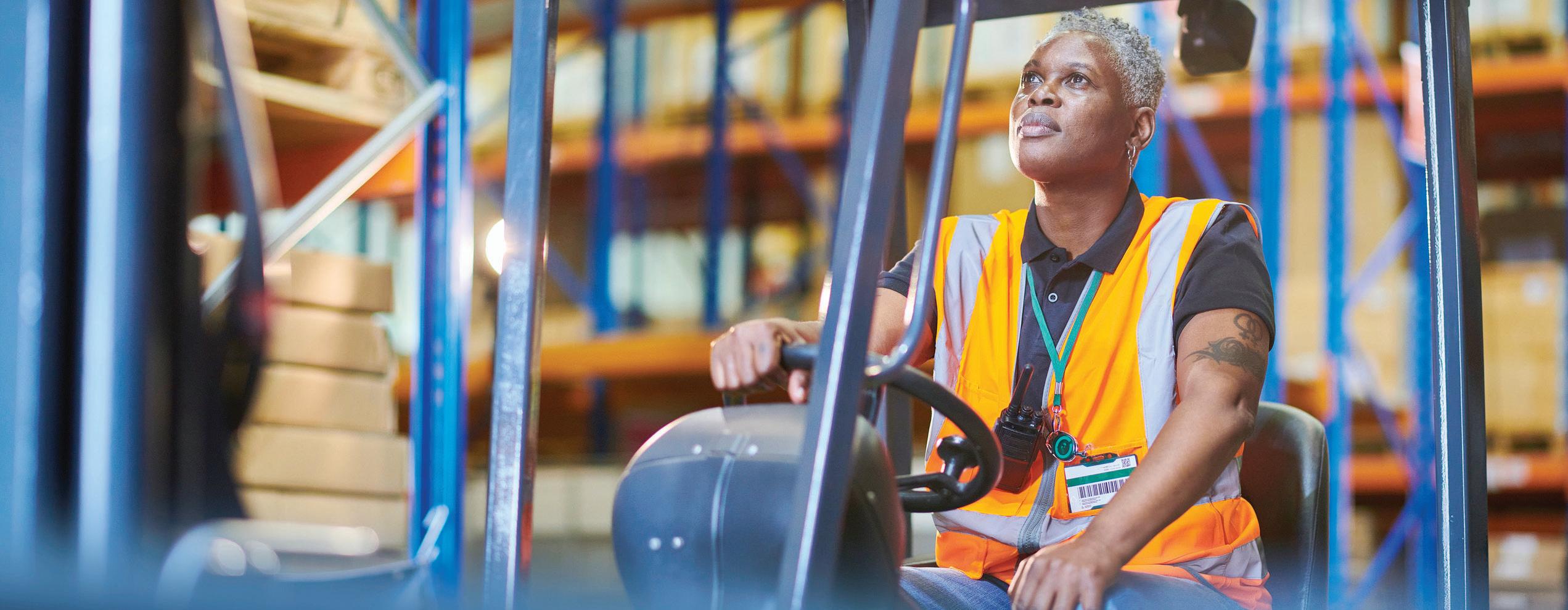
individuals contribute essential services to our communities, but their income can’t keep pace with the high cost of living in the state.
“As we approach the 2024 election, it is crucial for eligible voters and policymakers to be aware of ALICE issues and consider the needs of ALICE households when voting,” said Franklyn Baker, President and CEO of United Way of Central Maryland. “Our Maryland State Association of United Ways stands united in our vision for healthy, thriving communities and work around the clock to tackle challenges in housing, childcare, transportation, digital access, and more that impact ALICE households—and policy change is often the first step in addressing inequities that prevent people from getting by—or even getting ahead.”
Want an easy way to stay informed on the issues and directly contact your elected officials? Sign up for Voter Voice, United Way’s advocacy platform that educates and mobilizes supporters, and does the work of reaching out to policy makers for you!
Make your voice heard and take action today! UNITED, we can help improve the financial security and well-being of Maryland households that struggle to make ends meet.
To learn more about the challenges ALICE households face, to read the latest interactive ALICE Report, and to find helpful election resources so that you can vote to help ALICE households, visit uwcm.org/ALICE
“The Maryland State Board of Elections is committed to educating eligible voters about how to participate in the General Election and appreciates the Maryland State Association of United Ways and others’ efforts to communicate with Marylanders around the upcoming election,” said Jared DeMarinis, State Administrator, Maryland State Board of Elections. “Marylanders should visit the VOTE MD website for information on registering to vote and how to vote in this important election.”
About United Ways in Maryland United Ways in Maryland support and drive work in their respective regions to advance healthy communities, financial security, youth opportunity, and community resiliency.
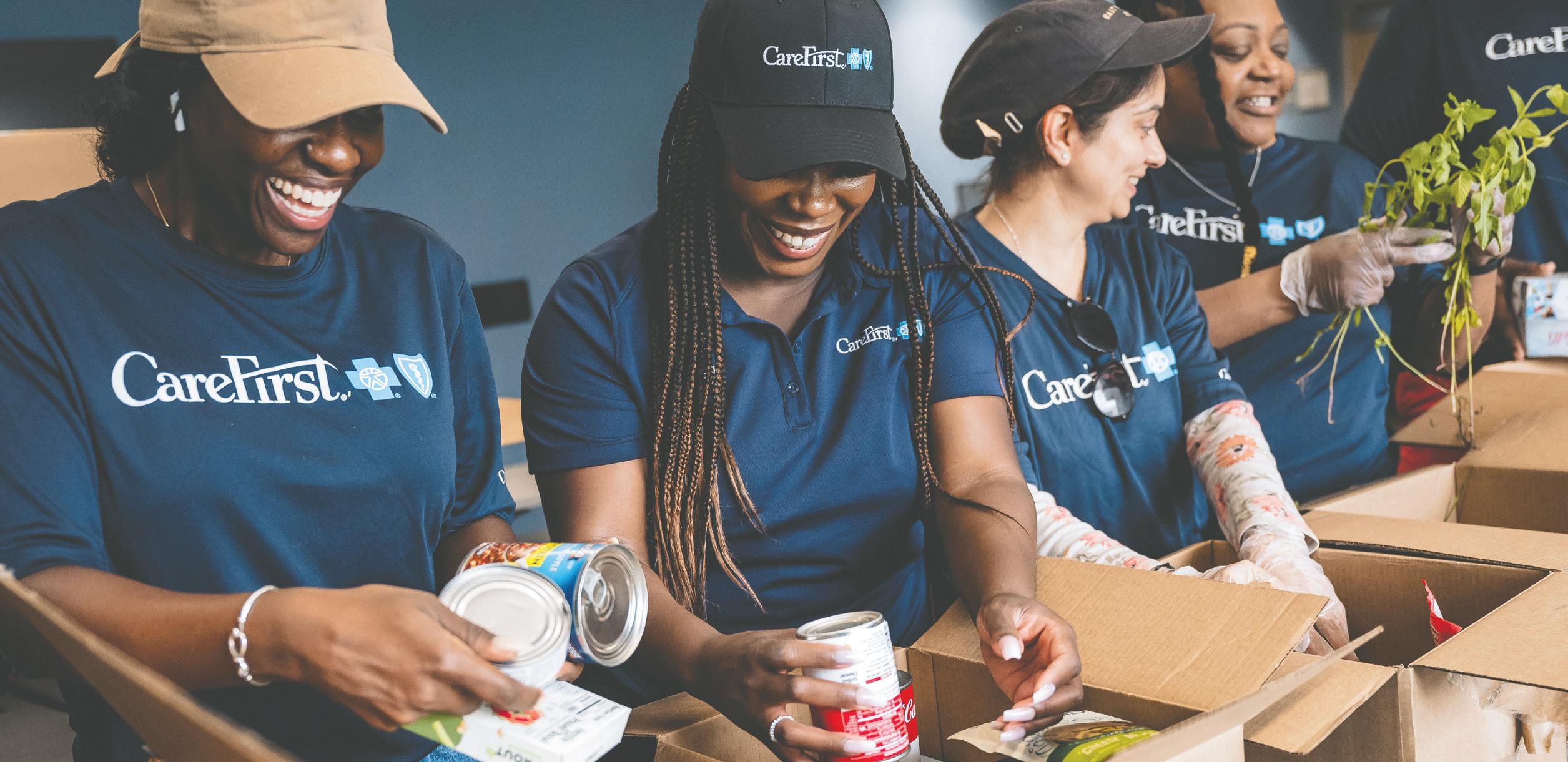

By Renata Sago Word In Black
If you’ve ever flipped through the pages of a dictionary, you’ve seen the thousands of words at the core of daily human expression. Lexicographers estimate the English language alone contains more than a million words, a perfect foundation for games and puzzles.
Therefore, it should not come as a surprise that experts say playing with words — in games and puzzles, alone or with friends — is a great way to support a healthy and active mind, according to AARP’s Global Council on Brain Health (GCBH).
Played alone, experts say, word games prompt reading and creativity, helping slow or prevent declines in cognitive health. Played in a group, word games encourage camaraderie, build trust, and help form social connections, one of the six pillars of brain health.
“The more that we’re intellectually engaged, socially engaged, physically engaged, the healthier our brain is,” says Dr. Yaakov Stern, professor of neuropsychology at Columbia University. “Mental engagement, cognitive engagement doesn’t have to be sitting in front of the computer and doing some kind of a training task. It could be fun.”
Research shows the brain is capable of retaining a wide range of words, around 20,000 to 30,000 on average over a lifetime. As our brains age, however, retrieving the right words in such a vast

Research
shows that word games can keep you socially active, which is important for healthy living.
vocabulary becomes more of a challenge, like finding a specific piece of paper in an overstuffed file cabinet.
Those changes can result in a common but frustrating occurrence scientifically known as a “tip of the tongue,” or TOT state: an inability to grasp a word that seems so close and familiar yet so far away in your brain. It’s common even in healthy seniors.
That’s where word games come in. Stern and other experts say activities that require recalling words or letter sequences, like Wordle, help exercise your working
memory. Games that incorporate reading or word definitions, such as a newspaper crossword puzzle or hidden-word game, help the brain exercise its visuospatial skills.
Healthy-brain word games run the gamut, from Scrabble to TV game shows to the generic crossword puzzles near the checkout counter at the grocery store.
While regularly playing just about any word-related brain teasers can help, Stern recommends taking on activities that are slightly challenging.
For example, if you are used to
doing word games alone, it might be beneficial to join a puzzle club. This will introduce you to new perspectives from other people and different abilities to process information as well as a chance
“The more that we’re intellectually engaged, socially engaged, physically engaged, the healthier our brain is.”
to socialize, an important pillar of brain health.
If you are used to being in groups, on the other hand, then it could be helpful to explore solo word games to test your mental acuity without any help, such as word searches and other puzzles that might even include numbers, symbols and sounds.
“The truth is that the more we do something, the better we get at it,” says Stern. “So people who learn to do calculations a lot learn how to do it in a more rapid way; they don’t have to think about it as hard.”
But if imaginative challenges are your thing, then you might even consider creating a game. There are several resources online to generate Word Searches and crossword puzzles for the purpose of learning and entertainment.
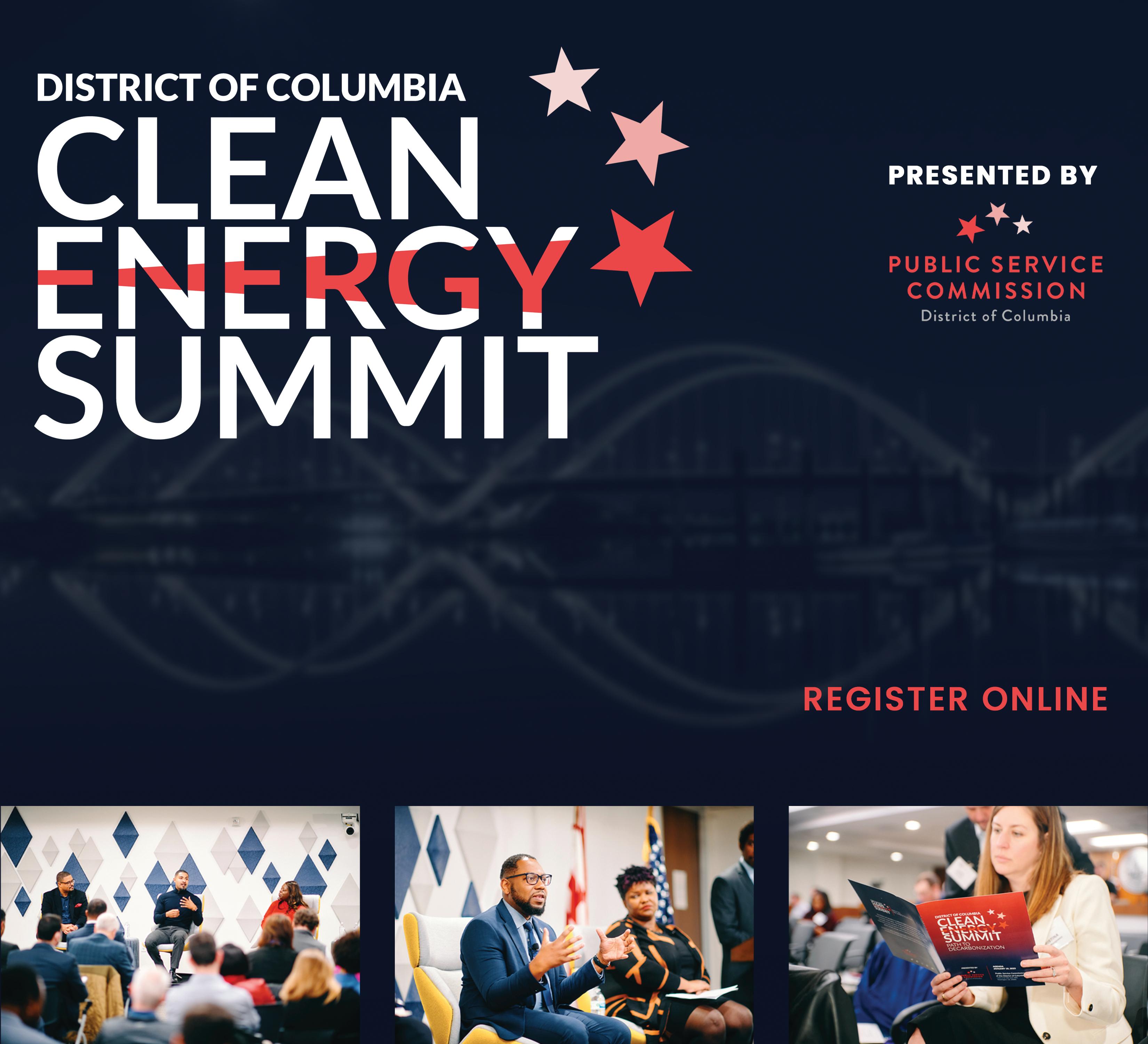


By Shaela Foster Special to the AFRO
As the holidays inch closer, the load for college students of all ages can become heavier. With a full course load comes greater stress and shorter deadlines. These high pressure situations can cause some students to become depressed and burnt out, sometimes leading to a sense of dread completing schoolwork.
If you are someone who has been stressed out due to school, here are a few tips for you to better combat this problem.
Use lists
Create a brain dump for the day and write down your top three prioritizations. This will help declutter the planning process in your mind.
“If I write it down, I can visually see it. It’s more likely to get done,” said Brande Remy, licensed clinical professional counselor and owner of Cultivate Wellness Counseling.
Writing lists helps get all the things stored in the brain onto a sheet of paper, allowing one to clearly see the things that need to be done and the order of importance.
“Once you start something, you feel motivated, and once you complete it, you feel even more [motivated],” she said.
Remy states she uses Post-it notes due to their ability to be put anywhere in her office. This way, the prioritized items are the first thing she sees as she begins and goes about her day.
Create small attainable goals
Receiving your syllabi at the beginning of each school year can seem daunting with all the assignments listed and their tentative deadlines.

Unsplash/ element5-digital
Experts say there are multiple ways to destress during the educational experience to bring balance and enjoyment to matriculation.
Creating small attainable goals can help break up what seems like a large task into smaller digestible pieces that can be completed over the course of the school year.
“Break it down so it’s not as big as it may appear in your mind,” said therapist Jamaal Simmons. “Sometimes your mind will play tricks on you and think ‘this is a huge project, a huge undertaking’ but when you break it down into small pieces, it’s not, it’s just doing [it] piece by piece.”
Small attainable goals include writing out a to-do list and giving weekly due dates to knock out multi-step assignments. For example, writing 500 words a week for a 1,000 word paper due later in the month is a way to cut down a major task.
Self- awareness
Recognizing when you’ve become overwhelmed and what your triggers are can be key in getting a grip on your stress levels,

according to Cortina and Jeremy Darden, licensed social workers and co-owners of Intentional Healing Space. Getting to know yourself and the resources available is crucial.
“We are much more resourced than we are
“Do you want to survive or do you want to thrive? Thriving looks like prioritizing, checking in with yourself and standing in all things that are important to you, you are the most important thing.”
aware of,” said Jeremy Darden. “It helps to know what our strengths are. It helps to know our gifts and abilities to cultivate esteem, confidence, self awareness and self agency.”
Exercise
Whether it be walking around the neighborhood, going to the park or making laps around the track, movement is the perfect way to relieve stress, according to Cortina Darden.
Exercising is a task you could do with others or by yourself, helping to promote community with friends and family.
Stress and high irritability, lack of physical energy and low motivation could all be improved by adding movement to the daily routine.

By Tannistha Sinha Houston Defender
The Biden administration announced it had finalized a regulation that would ensure 175 million Americans with private health insurance have access to affordable mental health services, one that would force health insurance companies to cover mental health ailments alongside physical health.
The regulation comes as a federal government crackdown on insurance plans not adequately catering to those suffering from anxiety, depression and addiction.
The administration agrees that the mental health and substance use disorder crises, exacerbated by the COVID-19 pandemic, disproportionately impact marginalized communities.
“There is no reason that breaking your arm should be treated differently than having a mental health condition. The steps my administration is taking today will dramatically expand access to mental health care in America,” President Joe Biden said in a statement.
Are existing regulations working?
The Mental Health Parity and Addiction Equity Act of 2008 (MHPAEA), despite being a bipartisan priority, did not increase access to treatment or decrease the cost of mental health care. Advocates find a lack of insurer compliance and attribute lax enforcement policies.
“For over a year, we’ve been telling the Biden-Harris administration that these rules will not work. They are too vague and burdensome; they overregulate instead of allowing health plans to build robust networks; and they will increase premiums for employees already facing high healthcare costs,” said Virginia Foxx (R-NC), chairwoman of the Committee on Education and the Workforce. “These rules do nothing to improve mental health care access and instead put paperwork over patients. Reporting regulations cannot be more important than workers’ mental health.”
In 2020, less than 50 percent of those with mental illness received treatment, while 70 percent of children did not receive care, the administration said in the statement. It attributed the trend to insurers making it difficult to access treatment and forcing people to pay high out-of-pocket costs as they seek care out-of-network or defer their treatment. The gap between outof-network care usage for mental health versus physical health benefits increased by 85 percent in recent years.
“That is why we made the largest investment in youth mental health in history and are transforming how mental health is understood, perceived and treated for all Americans,” Vice President and Democratic Party presidential nominee Kamala Harris said in the statement. “As someone who has spent my entire career fighting to improve the health and well-being of all Americans, I will never stop working to ensure that healthcare

is a right – not just a privilege for those who can afford it.”
What will the new regulation do?
The rule will aim to strengthen consumer protections by reinforcing the MHPAEA, which will further lower families’ healthcare costs and remove barriers to care, among other things:
● Require health plans to evaluate their provider networks, the amount paid to out-of-network providers, and the frequency with which they require and deny prior authorizations.
● Ensure health plans cannot use more restrictive prior authorization and make mental health and substance use disorder benefits harder to access than their medical benefits. Moreover, these plans have to use the same metrics to set up out-of-network payment rates for mental health as they do for medical providers.
● Require more than 200 additional health plans to comply with MHPAEA, setting a goal of providing critical protections to 120,000 consumers, thereby closing a loophole — the MHPAEA did not require nonfederal governmental health plans to comply with its requirements when it was first enacted.
● The Department of Health and Human Services will also release new compliance tools for states involving Medicaid beneficiaries enrolled in private Medicaid health plans.
● The law, however, does not require employers to offer mental health benefits to employees. Insurance companies and groups representing employers oppose the regulation. AHIP, the Association for Behavioral Health and Wellness, the Blue Cross Blue Shield Association,
and the ERISA Industry Committee (ERIC) issued a statement saying that the final rule will have “unintended consequences” and will raise the cost of care.
“There are proven solutions to increase access to mental health and substance use disorder care, including more effectively connecting patients to available providers, expanding telehealth resources, and improving training for primary care providers,” the letter said. “However, this rule promotes none of these solutions. Instead of expanding the workforce or meaningfully improving access to mental health support, the final rule will complicate compliance so much that it will be impossible to operationalize, resulting in worse patient outcomes.”
Constance Garner, a former policy director at the Senate HELP Committee who helped draft the original MHPAEA, said the rule will increase costs and worsen the shortage of mental health professionals.
“This final rule lowers the quality of standards for mental health professionals to join an insurance network while also pushing more patients or their caretakers to choose a higherlevel mental health professional for even milder symptoms that a primary care physician could treat,” Garner added.
Even today, mental health inequities exist when it comes to the African American community.
According to the Mental Health America of Greater Houston, Black residents of the country have been seen as “experimental subjects rather than as patients deserving of respect and quality care.” Throughout history, African Americans have gone through traumatic experiences like involuntary institutionalization to the Tuskegee experiment in 1932, revealing gaping holes in the health care system.
Women experience more days of poor mental health than men in Texas and the nine-county Houston Metropolitan Statistical Area, per Understanding Houston.
The Black population in Texas, on the other hand, is more likely to report five or more days of poor mental health compared to White and Hispanic populations.
Between 2001-2004 and 2017-2020, the number of suicides has increased by 139 percent in Fort Bend County, 40 percent in Harris County, and 107 percent in Montgomery County. Meanwhile, suicide rates in Texas increased 30 percent between 2001 and 2020.
Moreover, Nearly one in five adults have a mental health condition, and the availability of mental health resources remains the same. The study says 136 million people across the U.S. live in mental health professional shortage areas (HPSAs). In Texas, over 15 million people live in HPSAs, and only three in 10 people have their needs met. Prevalent issues such as low coverage rates for health insurance in Houston and Texas remain.
Feeling stressed about the election? Here’s what some are doing and what they say you can do too
By Mariam Fam Associated Press
If the high stakes presidential election is causing troublesome thoughts, existential dread or rifts with loved ones, there’s no need to white knuckle through it. Take a deep breath. Literally. Meditation and mindfulness teacher Rosie Acosta says focusing on each inhale and exhale can help regain that grounding sense of control that may be drowned out by the spiraling uncertainty of election season.
Experts like Acosta, who works in Southern California for Headspace, a mental health company and app, want those struggling to know there are ways to lighten electioninduced stress and navigate related tensions.
“I can control how I’m breathing…I can use my mindfulness practice and stay in the present moment, instead of worrying about what the outcome is going to be with an election,” said Acosta, who contributed the guided meditations “Surviving Dinner Table Debates” and “Compassion During Campaign Season” to Headspace’s “politics without panic” collection.
“You forget how
much power we actually have over this tension and this anxiety.” This year’s campaign has already witnessed unexpected twists and turns with President Joe Biden’s exit from the race and Vice President Kamala Harris’ quick ascendance among Democrats as well as assassination attempts targeting Republican presidential nominee former President Donald Trump. And roughly 3 in 4 American adults believe the upcoming presidential election is vital to the future of U.S. democracy, although which candidate they think poses the greater threat depends on their political leanings, according to a survey from The Associated Press-NORC Center for Public Affairs Research.
Mindfulness and setting boundaries
Acosta recalled how, back in 2016, political divisions seeped into a Christmas family gathering, turning an occasion for joy, connection and nostalgia into a “ground for verbal war.”
In navigating the aftermath, she said she learned to establish boundaries in the relationship with a relative and to focus
on things that brought them together, rather than drew them apart. That could mean saying “‘We’re not talking about this right now; let’s talk about something else,’” disengaging from an unhelpful conversation, ignoring a sent political meme, she said, or bringing up a shared memory, instead of discussing the latest news.
“Mindfulness and meditation really help us reframe our relationships — our relationships in general, but, specifically, our relationship to our thoughts,” she said.
Headspace has also partnered with When We all Vote, a national nonpartisan voting initiative created by former first lady Michelle Obama, to provide eligible voters with some free resources to ease election-season anxiety. There’s a stress quiz to determine if you’re “the collected constituent,” “the overwhelmed optimist,” “the weary worrier,” or “the politically panicked.” The partnership also includes a voting registration portal.
“This is really intended to reach folks regardless of political affiliation or points of view,” said Headspace’s president, Christine Evans.
“Regardless of who you are, you deserve mental health and support when you need it.”
Skills for disagreeing better
The Rev. Cynthia O’Brien often sees some people getting especially nervous around Thanksgiving.
“Thanksgiving is people you love, but you might not see all the time,” she said.
“I hear people saying, ‘Oh, my relatives in Texas think I have gone off the deep end, that they won’t talk to me,’ or ‘my sister-in-law and I aren’t speaking’ and it’s simply the political polarization that has come between.”
One suggestion, she said, is not to have such conversations at the dinner table and opt instead for oneon-one chats.
O’Brien is no stranger to being in a room with people with different ideologies.
Based in Oregon, she’s the pastor of First Presbyterian Church of Woodburn and Aurora Presbyterian Church, with small congregations that include conservatives and progressives.
She’s also a national debate chair and a workshop moderator with Braver Angels, a nonprofit that does depolarization work.
Workshops she moderates include ones teaching skills for disagreeing better.
“We’re not trying to smooth over differences.
We’re teaching skills to bring out the differences in a responsible, loving, caring way,” she said. See more on afro.com
Associated Press religion coverage receives support through the AP’s collaboration with The Conversation US, with funding from Lilly Endowment Inc. The AP is solely responsible for this content.
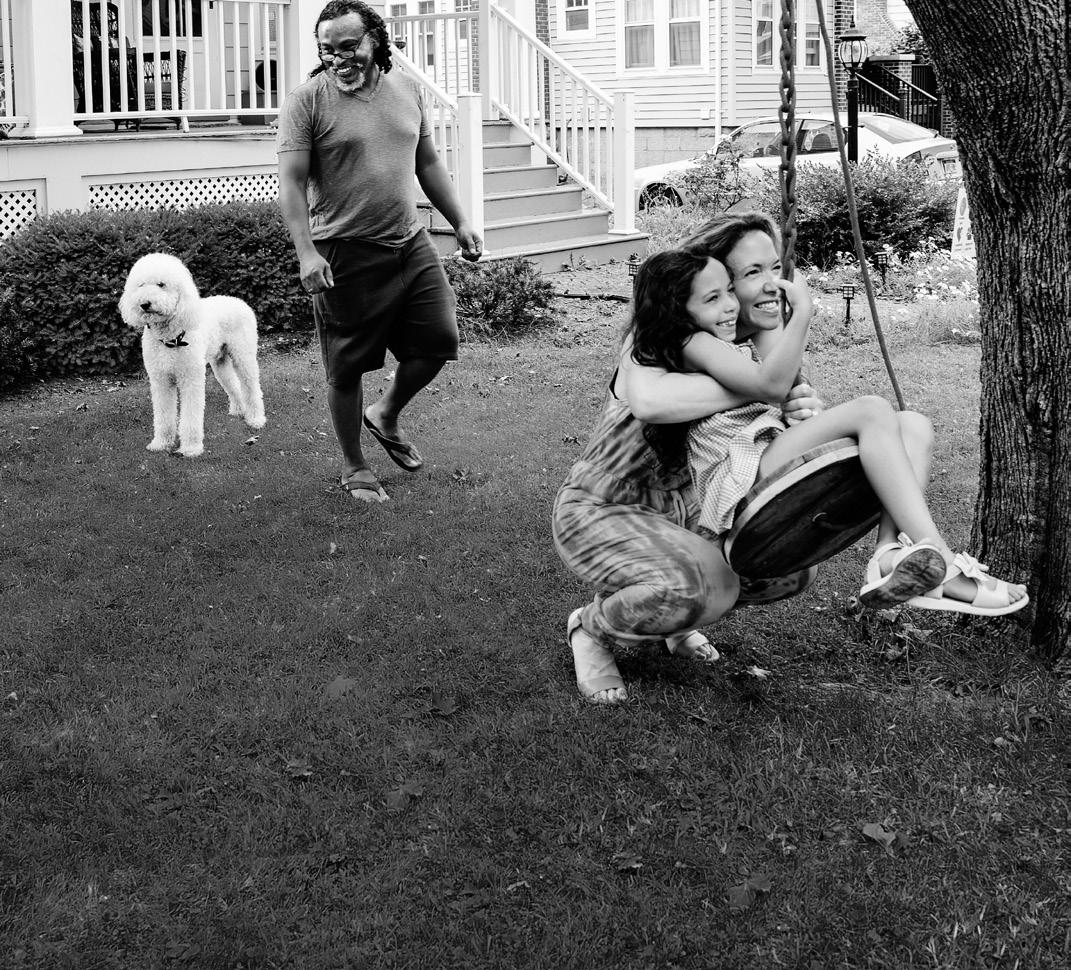

By Ariyana Griffin AFRO Staff Writer agriffin@afro.com
According to the United States Centers for Disease Control and Prevention (CDC), racism can lead to massive disparities in various systems, such as inequities within interconnected political, economic and social systems. It’s no surprise then, when experts say systemic racism also can lead to negative impacts on a person’s physical and mental health.
A 2022 survey completed by the Pew Research Center, titled “Black Americans Have a Clear Vision for Reducing Racism but Little Hope It Will Happen,” states that “roughly eight in 10 say they have personally experienced discrimination because of their race or ethnicity (79 percent), and most also say discrimination is the main reason many Black people cannot get ahead (68 percent).”
The report also revealed another fact: after experiencing racism in a variety of forms, Black Americans are “concerned about racial discrimination and its impact.”
But Black people aren’t the only ones concerned about the effects of racism. In 2021, the CDC took a significant step by officially declaring racism as a public health threat. This declaration underscores the urgent need to address the profound impact of racism on health.
Racism in the healthcare system can result in a lack of health resources and inequities. Black people, specifically, are then disproportionately impacted by a range of diseases and chronic conditions.
According to the CDC, “racial and ethnic minority populations experience higher rates of poor health and disease in a range of health conditions, including diabetes, hypertension, obesity, asthma and heart disease, when compared to their White counterparts.” The CDC also reports that as a result of these conditions, “life expectancy among Black or African Americans is four years lower than that of White Americans.”
Social determinants of health (SDOH) are non-medical factors that can affect the outcomes of one’s health and the CDC states that the determining factors can be age, where someone has lived, or where they work. According to the CDC, SDOH includes “healthcare access and quality, education access and quality, social and community context, economic stability, and neighborhood and built environment.”
The CDC also warns that “SDOH, including the effects of centuries of racism, are key drivers of health inequities within communities of color. The impact is pervasive and deeply embedded in our society, creating inequities in access to a range of social and economic benefits— such as housing, education, wealth, and employment.”
In the pandemic, these conditions only further exacerbated the effects of the coronavirus on Black bodies, already predisposed to disease due to environment and other social determinants of health.
Dr. Stephen B. Thomas, a founding director of the University of Maryland Center of Health Equity and a professor in the Health Policy and Management department, noted how COVID-19 infections wreaked havoc on the Black neighborhoods where people were already fighting other diseases due to circumstances beyond their control.
“There was a disproportionate burden in the pandemic [for] minority communities because of their exposure to the virus and pre-existing conditions– diabetes, heart disease, cancer– all kinds of debilitating diseases that made them more vulnerable,” said Dr. Thomas.
He shared that COVID-19 is still doing damage today, alongside other factors that are non-medical related.
For example, Dr. Thomas said that the lack of grocery stores, the high accessibility of processed fast food and chronic stress all contribute to negative health outcomes and increased susceptibility to the virus, which has mutated multiple times.
According to Feeding America, a nationwide nonprofit that is committed to fighting food insecurity, “22 percent of Black people in the United States experienced food insecurity - more than twice the rate of White people.” The organization states that this is due to Black communities being “disproportionately affected due to systemic racism and economic inequality.”
The results are clear. The Office of Minority Health states that in 2022, “African-American were 60 percent more likely than nonHispanic White adults to be diagnosed with diabetes by a physician.”
All of this leads to added stress on the body, furthering the impact of negative health outcomes.
“A lot of our community is under chronic stress,” he shared and he explained that this can lead to people not having the time to make healthy meals along with the struggles of them living in a food desert. “Obesity and all the things that come with it are all around us,” he said.
Chronic stress can adversely affect the cardiovascular system and cause headaches, muscle tension, blurred vision, reoccurring infections and other symptoms.
Pre-existing conditions such as diabetes, “are driven by exposure to chronic stress - like chronic stress of racism,” Dr. Thomas told the AFRO.
More health issues arise when talking about how people cope with these issues. Dr. Thomas shared that drinking, smoking and overeating are coping habits that can further worsen health conditions.
Experts say systemic racism has various negative impacts on a person’s physical and mental health. Read above to see how racism can impact different parts of the body.
According to a study titled “Anxiety-Related Disorders in the Context of Racism,” conducted at the School of Psychology at the University of Ottawa, “systemic racism puts people of color at a higher risk for anxiety disorders than White people.” The entire nervous system is impacted. The National Institute of Mental Health reports that anxiety can lead to “feeling restless, woundup, or on-edge; Being easily fatigued; Having difficulty concentrating; Being irritable; Having headaches, muscle aches, stomachaches, or unexplained pains.” Sleep can be impacted, causing issues in school and at work. Panic attacks can also be brought on by system racism, causing chest pain, a racing or pounding heart, “trembling or tingling” and feelings of doom.

At the 2022 Alzheimer’s Association International Conference, experts released two studies related to racism and the fact that Black people suffer disproportionately from Alzheimer’s Disease and other dementia- related disorders. The Alzheimer’s Association reports that “experiences of structural, interpersonal and institutional racism are associated with lower memory scores and worse cognition in midlife and old age, especially among Black individuals.”
A 2023 study conducted by Emory University found that “structural racism and geographic inequity are advancing the global crisis of diabetes, leaving people with diabetes 50 percent more likely to develop cardiovascular disease and twice as likely to die compared to those without diabetes, especially among minority populations.”
The American Lung Association stated in a 2024 article titled “The Unequal Burden of Asthma on the Black Community” that asthma “differs greatly depending on factors including race, gender and economic status. Specifically, Black individuals in America are nearly 1.5 times more likely than other races and ethnicities to be diagnosed with asthma in their lifetime.”
Information provided by the Massachusetts General Hospital states that “higher rates of obesity in Black, Indigenous and People of Color (BIPOC), compared with other groups in the United States, can be attributed in large part to systemic racism.”
The Journal of the National Cancer Institute, in 2024, stated that “structural racism is a root cause of cancer disparities and environmental injustices in the United States. Because of discriminatory policies and practices, polluting infrastructure is more likely to be developed in proximity to communities targeted for marginalization.”
According to the National Cancer Institute, cancer can form in almost any part of the body.
“There are consequences to living in a society and constant stress– where there’s not only easy access to guns but easier access to sugar, and a bottle of water costs more than a soda. We’re seeing the consequences,” said Dr. Thomas.
He suggests that people do their due diligence in learning about health issues, being mindful about what they eat and learning more about clinical trials.
Dr. Thomas said that while Black people are disproportionately impacted by a host of diseases, they are at the same time underrepresented in clinical trials that test the safety and efficacy of new medicines and treatments.
“The science that is leading to the success in curing diseases and in treating it, the science that currently exists, does not include the input of Black people as participants,” said Dr. Thomas. “By learning more about clinical trials, our community can gain better healthcare and be proactive in addressing health disparities.”

By Jennifer Porter Gore Word In Black
For Black Americans, mental well-being is always complicated by racism, which has been identified as a public health threat. And few venues present more complexity and angst for Black individuals, women and marginalized groups than the workplace.
But experts say the U.S. is grappling with a mental health crisis on the job, a problem that has grown exponentially since the COVID-19 pandemic. And while all employees face more barriers to getting mental health support at the office, the hurdle is higher for Black employees.
The news comes as the nation focuses on mental health and depression during the month of October.
Waking hours spent working
The theme of this year’s Mental Illness Awareness Week, observed Oct. 6-12, was “Mental Health at Work. The theme comes amid challenging times for mental health: financial pain at the grocery checkout line, a contentious political election season, seemingly relentless gun violence and continued high rates of drug addiction.
“Employed adults spend more time working than any other activity during their waking hours,” Tsuyoshi Akiyama, president of the World Federation for Mental Health, said in a statement. “In a myriad ways, and at its best, work can provide a livelihood and be a source of meaning, purpose and joy.”
However, “for too many people,
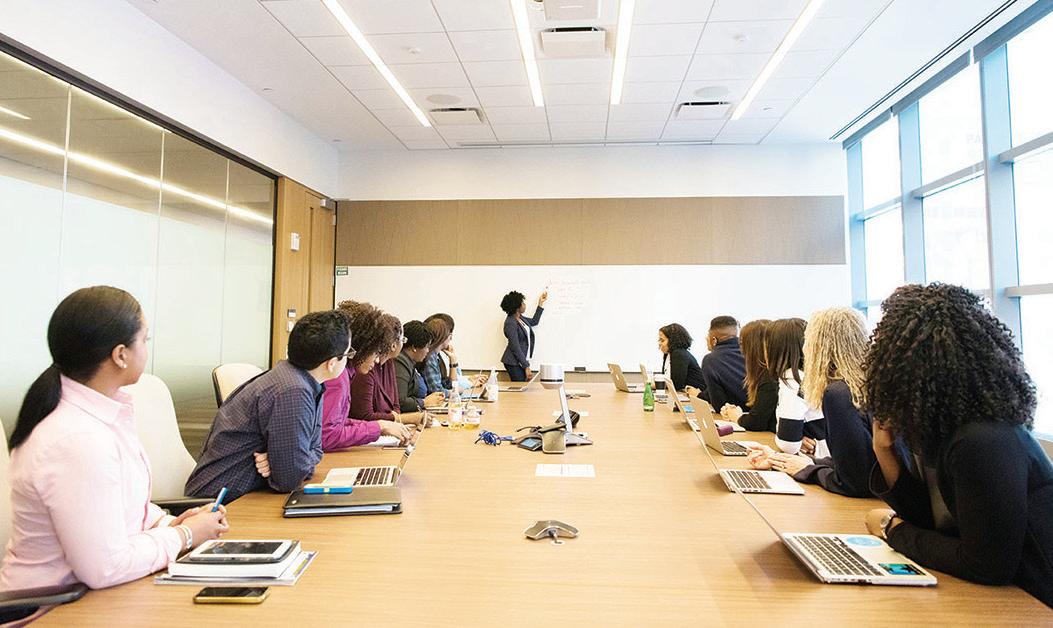
work falls far short of its potential, failing to enhance our lives and detracting from our mental health and well-being in ways that result
produced by Lyra Health, also found that 87 percent of employees faced at least one mental health challenge the year before.
When mental health awareness meets ‘workplace discrimination’
in excessive distress and mental ill health,” she said.
According to the 2024 State of Workplace Mental Health Report, two-thirds of the U.S. workforce experienced mental health stressors that negatively impacted their performance in 2023. The report,
The report also found that 55 percent of employees surveyed said they had cared for someone under 18 who struggled with their mental health. That’s more than double the percentage of workers — 19 percent — who said the same the year before.
By Shaela Foster Special to the AFRO
For some, fast-paced work environments create motivation to complete work tasks. However, for others, the hustle and bustle can trigger feelings of being overwhelmed and stressed. Low energy, aching bodies, fatigue and feelings of isolation arise as they step into their workplace or think about having to go to work throughout the week.
“It’s definitely hard to navigate stress when you feel like you’re on an island by yourself,” said Oluwatofunmi Oni, clinical psychologist and owner of a private practice called Adorn Therapy Services. “The impact of stress on us as human beings is double when we don’t have social supports when we’re going through stressful situations.”
This week, the AFRO explored ways to handle stress in the work environment. From creating small attainable goals to mindfulness breaks, take a look below to see how you can improve your work life and create balance.
Having and building community
Having a community of people around that you can lean on in times of need is an easy way to mitigate stress, Oni said.
Meanwhile, Black workers face greater barriers to mental health support in the workplace in 2023 compared with workers from all other demographics, according to The Hartford and the National Alliance on Mental Illness. The research found that Black workers were more likely to rate their mental health as “fair to poor” and more likely to say their company lacked both empathetic leadership and a work environment that encourages discussing mental health issues.
Support improves productivity
Many employers are becoming more aware of the problem’s severity and are looking for ways to resolve it. Nearly all HR professionals believe offering employees’ mental health resources can increase productivity, according to research from the SHRM Foundation, the organization’s non-profit arm.
“The importance of putting the mental wellness of our employees first cannot be underscored enough,” says Wendi Safstrom, SHRM Foundation president. “HR professionals, employers and people managers alike,” she says “can play an important role in the lives of their employees by assisting them in finding the resources they need while simultaneously reducing stigma.” Management training that considers equity, diversity and inclusion also supports employee mental health, according to the American Psychological Association. “[Having] a welcoming and safe work climate builds trust among leadership and employees, contributes to job satisfaction and helps minimize job-related stress,” the organization says.
If you are experiencing a mental health crisis, are thinking about suicide, or worried about someone else who needs emotional support, call or text the Suicide and Crisis Lifeline at 988. Help is available 24/7. Users can dial 711 and then 988 to get help.
Moreover, “Black workers were more likely than White workers to say they faced racism in the workplace — exclusion, hostility, a culture of inequity, microaggressions and discrimination — that affected their mental health,” according to The Hartford’s report.
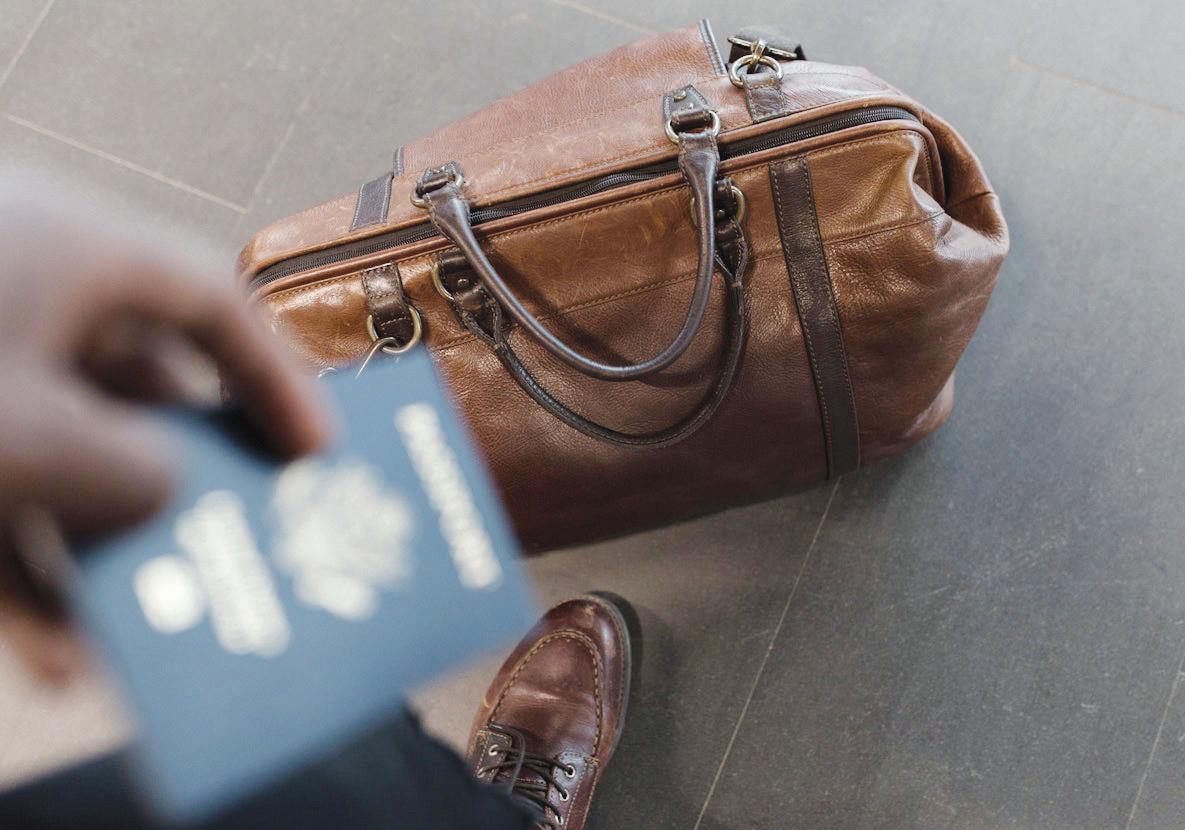
Jeremy Darden, licensed clinical social worker and coowner of Intentional Healing Space, recommends people analyze their community of people and who they have around them. He believes that when a person has a solid circle of support, the people involved “make us feel good about ourselves” and “water us.”
“I think what we are very much lacking, especially coming through the COVID-19 experience.
With this, he points to the importance of co-regulation of stress, when you’re in the presence of people that lift you up, calm, soothe and reassure you, reminding you about the better parts of yourself.
“There are a lot of device-oriented and device-centered resources. Thankfully friendships are free,” he said. “It’s just harder to come by because we’re losing some of those ingredients to develop and sustain healthy friendships.”
Taking time off from work
Implementing a work-life balance is crucial to alleviate stress put on by work. For Simmons, he has frequent conversations regarding taking mental health days and using paid-time off for his clients, some of which didn’t consider it before.
Remy emphasizes the importance of this balance, stating her
ability to leave her work at the office and go home with nothing on her plate. Whatever she hasn’t finished for the day will get done the next day she arrives in the office. With the help of her Post-it notes this helps her keep a level head and learn how to separate her home life and work life.
Oni stresses the seriousness of this issue, stating this will help with burn out.
Before reaching burnout, Oni states your body sends signals letting you know you’ve been put under high volumes of stress. This includes body aches, lack of concentration and going through the motions of the day without considering your emotions.
All these are signs that taking time off would be a good solution to putting yourself back on track as too much stress can have serious effects on your health.
to recognizing when stress appears and when and where it appears the most.
Understanding your tolerance levels is a way to practice mindfulness, according to Cortina Darden, licensed clinical social worker and co-owner of Intentional Healing Space.
“We live in a world where we are bombarded by stimulation,” Jeremy Darden said. “Stimulation itself can be a form of stress.”
One way to practice mindfulness includes doing breathwork, taking multiple deep breaths to recenter yourself, slowly becoming aware of your surroundings and the way you feel in that moment.
Guided meditations are available through YouTube that range from five to ten minutes in length, whichever you feel comfortable with doing is where you should start.
Clarify your values
Clarifying values needs to be at the top of dealing with workplace stress, according to Oni. She suggests people think about their values and how they align or do not align with their line of work.
If they do not align, it could lead to feelings of stress or anxiety. She encourages people to recognize who they are. These things should go beyond the workplace, considering questions like “Who am I and how does the person that I am fit into the work environment that I’m in?” instead of “How do I force myself to fit into the space?”
“You really do have to prioritize your wellbeing and the whole system is going to push back against that.”
“If you are not alive, if you’re not functioning, you cannot work,” she said. “So you really do have to prioritize your wellbeing and the whole system is going to push back against that. It’s going to tell you work comes first, but you have to make sure that you come first.”
Mindfulness
Mindfulness is another way to handle stress, as it helps one
“It causes a lot less stress when you are not working in alignment with yourself,” she said.
Remaining mindful of these values throughout the work week can assist with lessening stress levels. This can help you put copy mechanisms into place to prevent burning out.
Clarifying these values can also help prioritizing yourself above everything else in your life.
“We’re always focused on the external pieces of our world that impact what we’re going through so much that we forget that … you are the main character of your story,” Remy said. “You cannot be in your story being a supporting actress because who’s going to sing the songs? Who’s going to take the lead if you’re not doing it?”











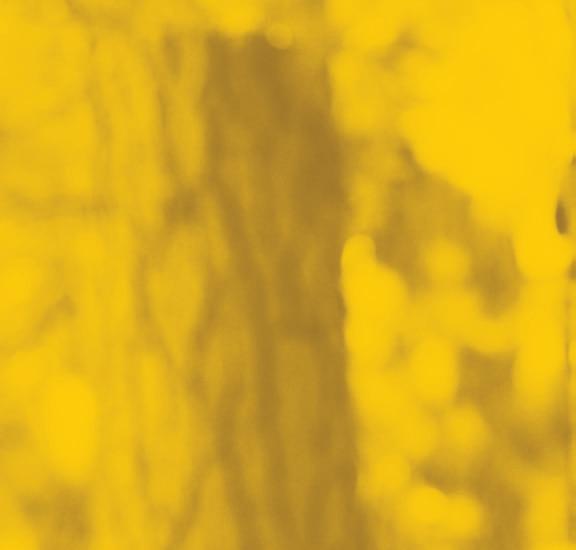







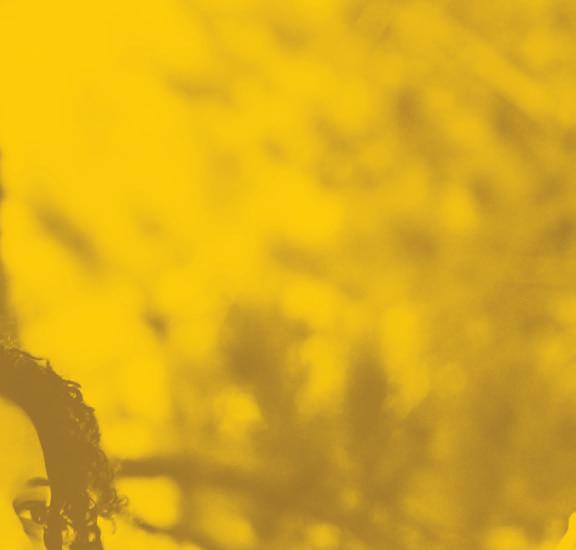











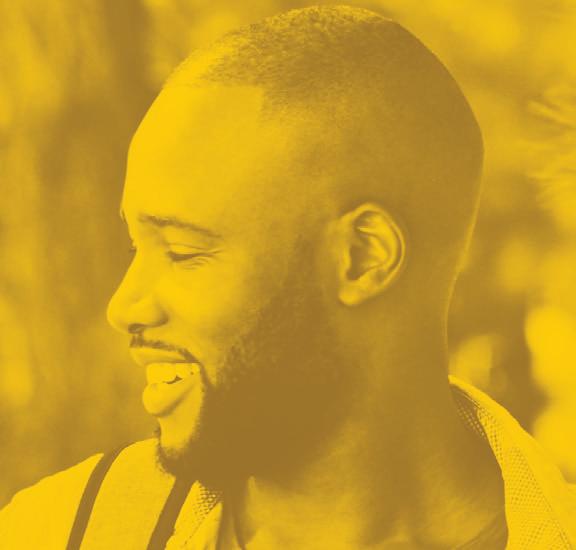





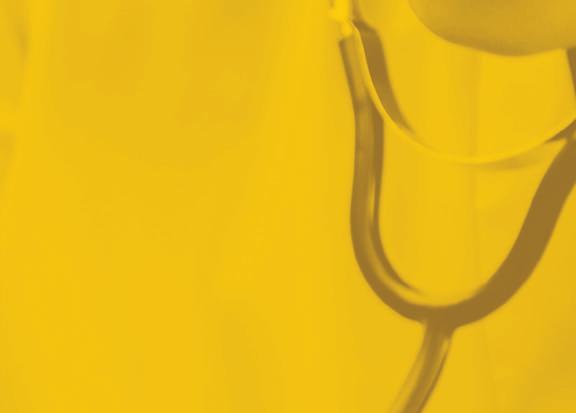



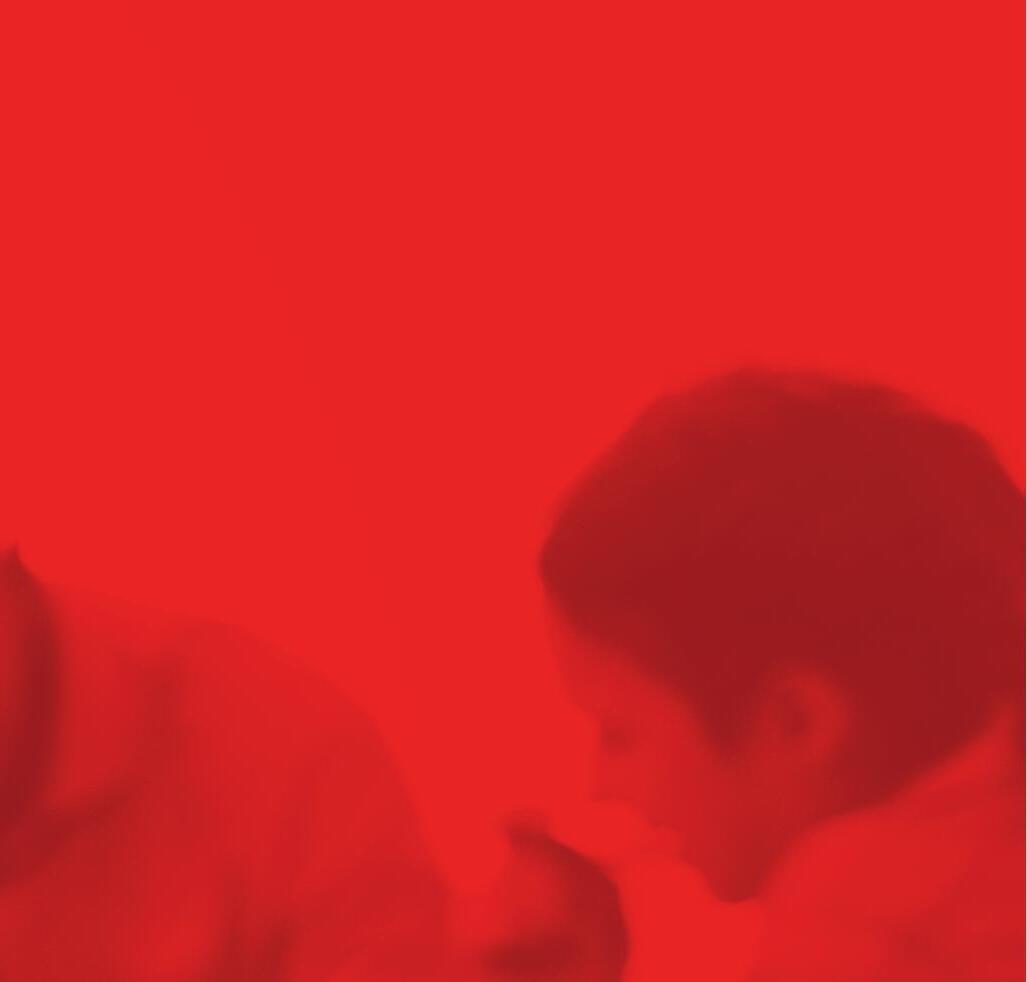
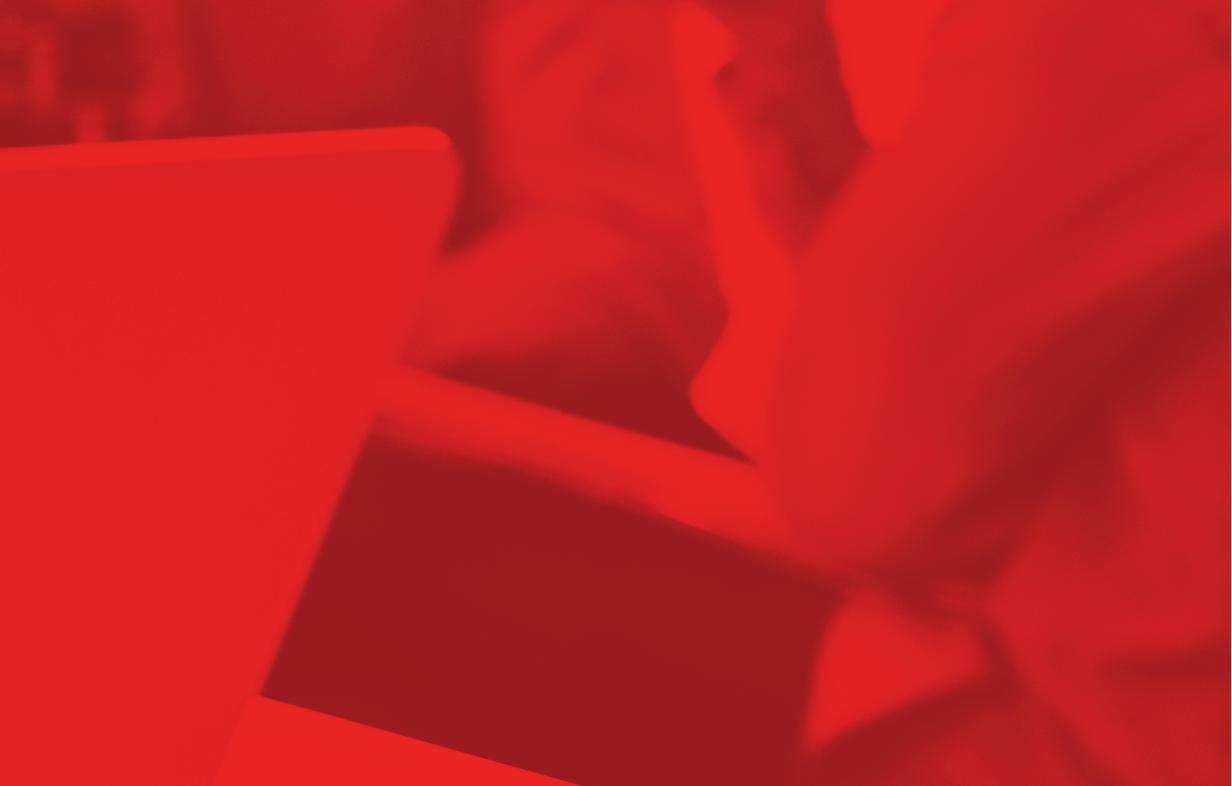



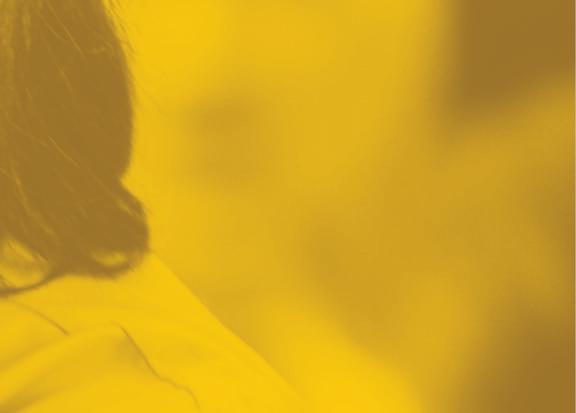



By Black Health Matters
The symptoms of ADHD are the same for Black men and Asian women, just as they are the same for Caucasian and Latino children. But, you may be surprised to learn how this behavioral disorder affects the African-American community differently. From difficulties in diagnosis and treatment to underrepresentation in scientific studies, ADHD looks very different for African Americans, and many children are the ones affected. What is ADHD?
Attention Deficit Hyperactivity Disorder, ADHD, can’t be detected in a medical exam. It’s a behavioral disorder that causes someone to be easily distracted, start tasks and not finish them, and make careless mistakes. In severe cases, it can affect daily functioning, making it harder to get through school or work. Symptoms may be very different depending on the diagnosis. For example, it could be a predominantly inattentive presentation or a combined presentation. While it’s not an anxiety or mood disorder, ADHD is a risk factor for them and can often lead to learning disabilities.
Now that you know what ADHD is, keep reading to learn how it affects ethnic groups like Black people through various risk factors.
How ADHD affects African Americans
Less likely to be diagnosed
While the Individuals with Disabilities Education Act helps support special education for those with diagnosed mental health conditions, it’s difficult to help those who struggle without one.
Everyday Health cited a Pediatrics study from the National Library of Medicine that found Black children were over 30 percent less likely to be correctly diagnosed with ADHD symptoms. The study evaluated 17,000 children from Kindergarten through 8th grade.
Many of those diagnosed with ADHD get their diagnosis once they reach school age, when their symptoms are more apparent in the classroom. Behavioral problems and trouble concentrating leading to learning disabilities, are often the first signs, but they can be missed for various reasons. A vast majority of those cases of childhood ADHD that go undiagnosed occur within the Black population.
There are several environmental factors that contribute to these missed diagnoses, including:
Low socio-economic status
Racial discrimination, including clinician bias-
Comorbidityto fewer community resources
• Comorbidity (co-existing anxiety disorders, etc.)
• Overcrowded, underfunded school systems
If diagnosed, they are less likely to be treated
The failure to properly diagnose ADHD symptoms in children of color extends to its treatment. Those diagnosed may not have access to the behavioral therapy or medication needed to manage
their ADHD symptoms appropriately. Because it will require sustained mental effort even with treatment, living with this conduct disorder can burden children, adolescents, and adults alike.
One of the most significant obstacles many must overcome when seeking treatment for Attention Deficit Hyperactivity Disorder is poverty. Healthcare costs are often too high for those without insurance to afford, keeping them from getting the care they need to manage ADHD symptoms.
According to a study pcomorbidityThe Clinical Psychology Review, another barrier to treating ADHD is co-morbidity or having more than one mental health condition. Certain anxiety disorders or mood disorders can complicate symptoms and make them harder to detect.
More risks with untreated ADHD
Like all mental health conditions, untreated ADHD has negative consequences, whether it has been diagnosed or not. In children, it’s most often seen in behavioral problems at home and poor performance in school. These can lead to fewer job opportunities as an adult, trouble forming relationships, and susceptibility to additional mental health conditions, especially mood disorders.
Not managing symptoms of ADHD, for various reasons, increases the risk of legal trouble. Yet another study published in The Clinical Psychology Review showed that a higher percentage of children and adolescents with an ADHD diagnosis were associated with arrests, convictions, and incarcerations in their adult life.
One of the most dangerous symptoms is impulsivity, causing a person to take unnecessary risks. This could be a child running into the street after a toy, substance use, or an adult driving erratically when they become impatient. A study published in The Lancet found that those with untreated ADHD symptoms had a much higher risk of death than those taking non-stimulant medication.
Racial disparities within schools
Disparities within schools have improved immensely in the last decade, allowing many students to benefit from newer textbooks, more modern technology in the classrooms, and more and betterdistributed funding. However, some disparities still exist that put some students at a disadvantage. Where one student could be seen as impulsive, another may be seen as defiant. Some school districts have invested in training to help teachers notice the signs of ADHD so students can get the proper diagnosis and benefit from the Individuals with Disabilities Education Act.
Schools with many different ethnic groups benefit when teachers and parents work together to understand ADHD symptoms and how they contribute to learning disabilities. Teachers may spend much of their time outside the classroom preparing reports and completing forms for their many students. While they do their best, they may not always notice every symptom. If you are concerned

say the signs and symptoms of
your child may have a conduct disorder like ADHD, you should bring it up with their teacher or a school counselor.
Cultural differences in behavior
Another reason young African Americans are less likely to be diagnosed is that children and adolescents learn to interact with family, friends, and society differently. The ADHD symptoms of a Black person may look completely other than those of a Caucasian or Latino and, therefore, be missed by providers. This has less to do with the actual symptoms of ADHD, a mood disorder, or any other mental health condition and more to do with cultural differences.
Attention Deficit Hyperactivity Disorder, ADHD, can cause extreme restlessness and similar symptoms, which won’t reflect how someone interacts with their peers in the classroom or at work. While cultural differences may become social factors when looking for ADHD symptoms, they should still not be overlooked.
Fewer Black mental health providers
Black Americans are not the only cultural community that feels more comfortable seeking care from providers of the same race. A study by Penn Medicine researchers found that most patients responded favorably in after-care surveys if they saw someone within the same ethnic group. This was across the board, with Caucasian, Latino, Asian, and Black African American populations.
For many patients, this may not pose a problem.
However, African populations don’t have as many options as other groups when considering their location, insurance plans, income, and other environmental factors. The American Association of Medical Colleges reports a shortage of mental health providers and an ever-growing demand for services. Without relief, those with ADHD symptoms may find it more challenging to locate African American therapists or psychiatrists.
Underrepresented in ADHD studies
ADHD has been studied extensively over the last several decades, but these studies were primarily focused on many children who were white. It wasn’t until the last ten years or so when ADHD scientists began to study the risk factors, including family history, that affect African Americans specifically. The scientific knowledge and other resources about how this behavioral disorder affects Black people are limited compared to what we know about ADHD in general. There should be many more studies completed before we can say that the African American population is fully represented and the research is accurate.
Less understanding of these societal pressures
Contrasting treatment of behavioral, anxiety and mood disorders for African Americans has become a part of Black history. What is more concerning, though, is that ADHD treatment continues to affect children, adults and their family members into the present day. Public opinion is that ADHD can lead to substance use within Black communities as well as create political and economic issues. However, those outside of these communities have very little understanding of the profound effects that inequalities still have when it comes to mental health conditions, therapy and medication.
The lack or misunderstanding of the way ADHD affects more than just the mind and body but a culture as well has led to the increasing disparity seen in health care. More advocates, like Black Health Matters, have been working to overcome these inequalities.
ADHD has been a public health concern for decades, but it is only now becoming a more significant and more prominent issue for Black people. It often falls to the person or parent to recognize ADHD symptoms and seek help, despite the stigma. This ensures that everyone receives a proper diagnosis and can get the treatment necessary to live productively and with a positive mindset.
with ADHD are turning to AI apps to help with tasks, experts say try it cautiously
By Kenya Hunter
The Associated Press
Becky Litvintchouk didn’t think she’d be able to manage the mountain of tasks needed to become an entrepreneur. Every other part of her life has been overwhelming because of ADHD, which can impact her ability to concentrate.
So, she turned to AI. The app Claude helps her decide which contracts made the most sense for her hygienic-wipes business, GetDirty, without having to read them word for word. She also created business plans by telling the generative AI bot what her goals were and having it create steps for her to get there.
“It’s been just massively instrumental. I probably would not be where I am today,” she said of using AI for about two years.
Experts say generative AI tools can help people with attention deficit hyperactivity disorder — who experience difficulties with focusing, organizing and controlling impulses — to get through tasks quicker. But they also caution that it shouldn’t replace traditional treatment for ADHD, and also expressed concerns about potential overreliance and invasion of privacy.
Will apps replace ADHD treatment?
Emily Kircher-Morris, a counselor who focuses on neurodivergent patients, said she’s seen the tools be useful to her clients with ADHD. She even uses them herself since she has ADHD.
Her clients, she said, seem to have varying levels of comfort with the idea of using AI. But for those who take to the technology, “it really can help to hook people in, like, ‘Oh, this is kind of a fancy new thing that catches my interest. And so I really want to dig in and explore it.’” She also said it’s good to use caution. John Mitchell, an associate professor at Duke University School of Medicine, added that AI apps should be used more as “one tool in a toolbox” instead of replacing traditional treatments such as developing organizational skills or taking prescription medications.
“If you’re kind of treading water in your job and AI’s a life preserver, well, that’s great you’re staying above water, but, you know, you still don’t know how to swim,” he said.
What else can the apps do?
Litvintchouk, a married mother of four living in New York City, dropped out of high school and left the workforce — all things that research shows are more likely to happen to people with ADHD, putting them at higher risk of economic instability.
Aside from helping with her business, she uses ChatGPT to help with grocery shopping — another thing that can be fraught for people with ADHD because of the organization and planning skills needed — by having it brainstorm easy-to-prepare recipes with a corresponding
grocery list.
When she shared her technique with another mom who also has ADHD, she felt more people needed to know about it, so she started creating videos on TikTok about various AI tools she uses to help

As technology evolves, experts say AI can help those with ADHD stay on track, but there are warnings to heed. App users should use caution when sharing personal information and keep in mind that the platforms aren’t always made with certain demographics in mind.
manage her ADHD struggles.
Generative AI tools can help people with ADHD break down big tasks into smaller, more manageable steps. Chatbots can offer specific advice and can sound like you’re talking with a human. Some AI apps can also help with reminders and productivity.
Software engineer Bram de Buyser, said he created Goblin.tools with his neurodivergent friends in mind. Its most popular feature is the “magic to-do,” where a user can enter a task and the bot will spit out a to-do list. They can even break down items on the list into smaller tasks.
“I’m not trying to build a cure,” he said, “but something that helps them out (for) two minutes out of the day that they would otherwise struggle with.” What kinds of problems could apps create?
Husson University professor Russell Fulmer describes the research around AI and ADHD as “inconclusive.” While experts say they see how artificial intelligence could have a positive impact on the lives of people with anxiety and ADHD, Fulmer said, it may not work perfectly for everyone, like people of color with ADHD.
He pointed to chatbot responses that have been racist and biased at
times.
Valese Jones, a publicist and founder of Sincerely Nicole Media, was diagnosed with ADHD as a child and uses AI bots to help with reading and responding to emails and proofreading public relations plans. But its responses don’t always capture who she really is.
“I’m southern, so I talk like a southerner. There are cadences in my writing where you can kind of pick up on the fact that I’m southern, and that’s on purpose,” said Jones, who is Black. “It doesn’t pick up on Black women’s tone, and if you do put in like, ‘say it like African American,’ it automatically goes to talking like ‘Malibu’s Most Wanted.’”
And de Buyser said while he sees a future where AI chatbots function more like a personal assistant that is “never tired, never sleeps,” it could also have privacy implications.
“If you say, ‘Oh, I want an AI that gives me personal information and checks my calendar’ and all of that, you are giving that big company access to your emails, your calendar, personal correspondence, essentially your deepest, darkest secrets just so it can give you something useful back,” he warned.
agreement can be reached, they fear that the conflict will emerge into an all-out war.
Over the weekend, a pro-Palestinian protest was held in D.C., which also occurred without incident, and was another visible effort led by those who want to see a ceasefire in Gaza.
Later in the evening, a peaceful pro-Palestinian vigil was held on the campus of the mall at the University of Maryland in College Park while a separate vigil in support of Israel was held nearby.
After the pro-Palestinian vigil was initially announced, Jewish groups and political leaders voiced their outrage which led college officials to cancel the event and deny a permit that had first been approved for students to organize an interfaith event on Oct. 7. However, after UMD Students for Justice in Palestine filed suit, a federal court last week ruled that college administration had violated the students’ First Amendment rights by canceling the vigil.
The organizers described the Oct. 7 event as a demonstration in recognition of the tens of thousands of civilians who have died since the initial attack one year ago, further saying that the deaths of Palestinians in Gaza has been nothing short of “ethnic cleansing and genocide.”
During the event at UMD, which kicked off in the morning with teach-ins, members of the community participated in conversations, poetry readings and art displays. The vigil continued into the evening hours with interfaith prayers and an Islamic funeral prayer.
Security was evident and in full force but, like other events in the region, the event concluded without any reported acts of violence.

By Gene Lambey Special to the AFRO
According to the National Center for Health Statistics, “among men aged 18–44, nonHispanic Black and Hispanic men (6.1 percent ) were less likely than non-Hispanic White men (8.5 percent) to report daily feelings of anxiety or depression.”
The National Alliance on Mental Health (NAMI) has found that “Black Americans are often over diagnosed with severe mental illnesses, such as schizophrenia, and they are underdiagnosed for mood related disorders, like depression and anxiety.”
NAMI has also reported that African Americans are also “less likely to be offered medication for their diagnosis, even when appropriate and covered by health care.” The organization said that “implementing evidence-based screening and assessment tools that follow a biopsychosocial spiritual model — a treatment modality that takes into account biological, psychological, social and spiritual factors when assessing and treating an individual — will increase the efficacy of culturally sensitive diagnosis and treatment.”
The AFRO recently had the opportunity to speak about Black men and mental health with Rodney Orders, a licensed psychoanalyst with his own practice, Orders Counseling, located in Rockville, Md.
The expert works with patients who may be experiencing issues such as anxiety, depression and addiction. Orders Counseling offers martial, family and relationship counseling as well with a focus on “low-cost, excellent therapy” for families of color.
He works with adults, teens, children and couples, as well as with athletes, such as NFL players.
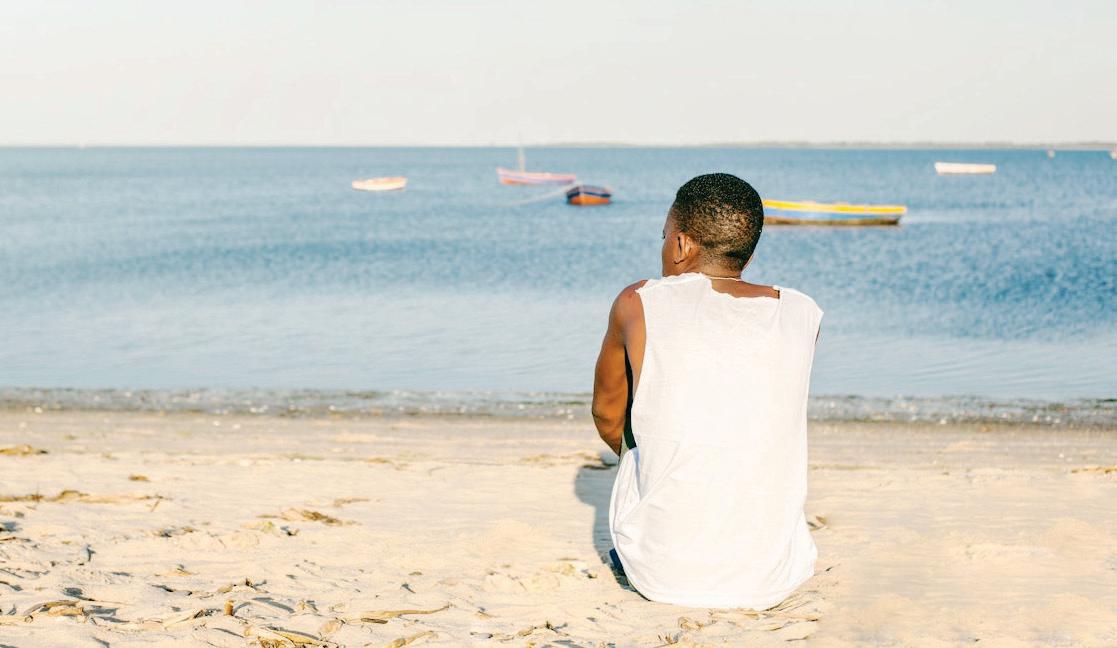
Experts say Black men are statistically less likely to seek out professional help with their mental and emotional health.
“The aim is to help clients gain understanding,” said Orders. “We can heal and resolve issues that come up for them.”
Orders provides cognitive behavioral therapy for his clients, and said that mental health resources should be more accessible to the Black community. He spoke on the need for Black-owned therapy practices, stating that many are owned by experts from non-
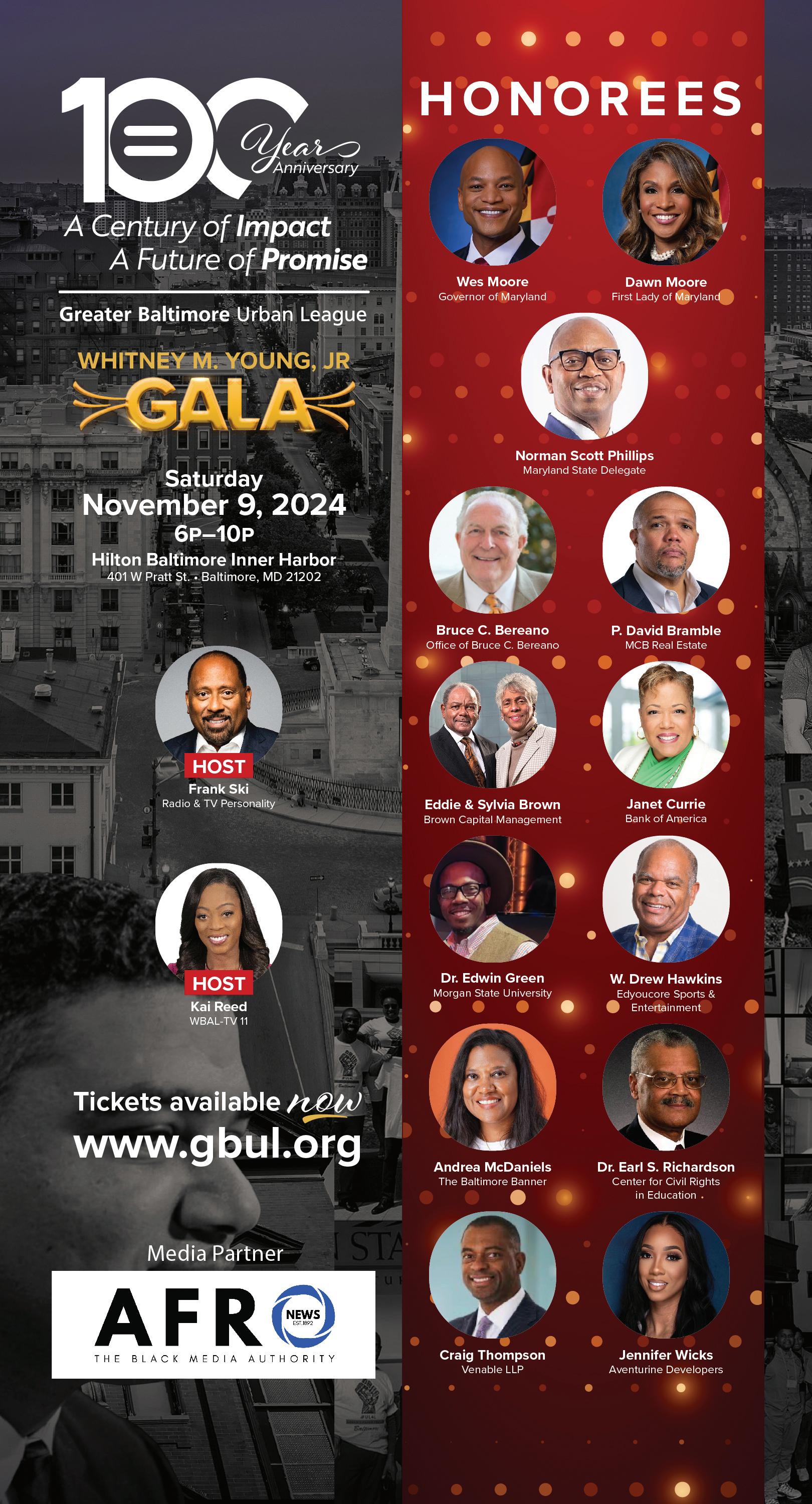
Black backgrounds who may not understand the physical nor cultural differences of their patients’ environment.
“There is this lack of recognition or connection to the [therapy] process just based on the absence of African Americans in the profession,” said Orders. “I think that the first thing that needs to change is more folks who are Black, Indigenous, People of Color (BIPOC) going into the field. I think more education, especially in media form would also be helpful to destigmatize therapy for the Black community.”
Orders said that therapy should be normalized to a point where it is as common as an annual physical with a general practitioner.
“For a lot of Black people and BIPOC people, the world is tough enough with being ‘othered’ and marginalized,” he said.
“I think it is important to normalize therapy as a place where you can heal from intergenerational transmissions of trauma to the issues of White supremacy, hypervigilance and shame that comes with the issues around assimilation— which requires people to give up their specialness to fit in,” continued Orders.
He currently works alongside organizations in Baltimore like Black Men Unifying Black Men.
El-Amin spoke to the AFRO on the continued stigma around mental health and seeking therapy within the Black community.
“The experiences that we’ve had as Black men in America…I think that many of us need to have mental health services provided for us and we should seek them out,” commented El-Amin.
“I think it is really important to normalize therapy [as a] place where you can heal from intergenerational transmissions of trauma to the everyday issues of White supremacy and hypervigilance.”
“All these things I’ve mentioned cause a different type of mourning in the Black community…therapy is a place we can build resilience as well as heal.”
Orders described the dangers of Black men holding their emotions inward, or internalizing what they feel, stating that it “leads to stress, leads to higher mortality rates, leads us to engage with risky behavior.” and added how it can lead to substance abuse. Order noted that some turn to substances like drugs and alcohol as a coping mechanism because they “ haven’t learned better coping strategies.”
“To me, addictions are tools we use to try to reduce the harm that we’re experiencing and we don’t have the healthiest tools to reduce that harm. We seek out the things that are available to us or the things that we’ve seen our parents or grandparents [use] to cope,” said Orders. “The harm is that we’re not communicating. We’re not building community around these particular issues –we’re dealing with it in isolation. If we talk about what’s going on with us, we’re more likely to gain access to those resources.”
Earl El-Amin, president imam of the Muslim Community Culture Center in Baltimore, and vice president of Community and External Affairs at the National Center on Institutions and Alternatives (NCIA), is working to destigmatize mental health in communities of color.
He listed organizations such as the Black Mental Health Alliance (BMHA), which helps connect community members with mental health services such as counseling and therapy.
El-Amin believes that consistent mental health services within the Black community looks like mental health services within Black neighborhoods, barbershops, recreation centers, schools and universities.
He said he wants to see more Black men seek help instead of holding on to their emotions, which can have detrimental effects to oneself and others as well.
“I think in many instances, we see that in domestic violence and in our neighborhoods. We see [people] being unable to resolve disputes…lashing out. [It’s a] byproduct of not having that interaction with people that are close with you, that you can confide in,” Earl El-Amin said.
El-Amin stated that most Black men keep an “arms length” on personal matters, but communicate with each other regarding their shared interests such as sports and women.
“We’ll delve into that, but we won’t really delve into what is really ailing us–we won’t confide in anyone, but we will talk about sports and sexual conquests,” said El-Amin.
El-Amin suggests that Black men take the time to work out and exercise together–walking, talking together and eating together. In his time, he’s found that “it helps the individual to loosen up.”
The faith leader said at the heart of it all is the feeling of connection and understanding.
“The best knowledge is the knowledge of the self,” he said. “The role of therapy essentially is to find the best part of you,” ElAmin explained. “Once you have a working knowledge of self, you are able to evolve and grow not just as a Black man but as a human being. That’s the crux of it.”
El-Amin said there are some self-help options that can be impactful as well. He recommends two books for all Black men to read: “The Invisible Ache,” by actor Courtney
and “Visions

By Aria Brent AFRO Staff Writer abrent@afro.com
Alzheimer’s Disease (AD) is an illness that takes a village to tackle. In its most advanced stages it can be hard on a patient and their care team.
According to the National Institute on Aging, “Alzheimer’s disease is a brain disorder that slowly destroys memory and
Scharre. “If you have a lung problem or if you have sleep apnea you should get that treated. Anything that tries to help improve the oxygen flow to the brain is going to be good.”
Eat a healthy diet
Scharre noted that a healthy diet is vital to preserving the brain’s health. He shared that diets that are heavy in fresh fruits and vegetables are best and making sure you eat a well balanced meal that provides you with all the necessary vitamins is a must.
“Socialization is a wonderful whole brain activity…if you don’t use it, you lose it so if you don’t use your muscles, they become weak–same thing with your brain.”
thinking skills and, eventually, the ability to carry out the simplest tasks.”
Alzheimer’s Disease is a form of dementia that occurs after a series of amyloid and tau proteins begin to build up in the brain, toxify nerve cells, kill them and ultimately result in memory loss issues, according to Dr. Doug Scharre, a neurologist at the Ohio State University Wexner Medical Center. Scharre leads the memory disorder center and in honor of World Alzheimer’s Month, he spoke with the AFRO about a few habits that can be practiced to help prolong or combat the effects of AD.
Treat any breathing problems you may have
The brain needs a constant supply of good air. Going outside for fresh air and getting any breathing or lung related issues treated is vital when trying to assure the brain has good airflow.
“The brain needs good oxygenation, without it it doesn’t function well,” said
“Diet is very important. The most brain healthy diets that we know of are typically like the Mediterranean diets and they consist of lots of fruits and vegetables,” he said. “There isn’t as much red meat and there’s a little bit more fish. You shouldn’t eat a lot of animal fats and try to have less processed sugars. The natural sugars in fruit are fine to enjoy.”
The memory loss expert went on to note that typical diets that are consumed in the Black community can be harmful to the brain and contribute to the likelihood of Alzheimer’s disease developing in people who have a family history of the disease.
“If you’re at risk for Alzheimer’s and you have high cholesterol, there’s some data that suggests increasing activity once you reach midlife to try and help reduce the amyloid proteins from building up in the brain,” he said. “Some diets, particularly African-American diets and other minority diets have been found to be tied to increased rates of Alzheimer’s and part of that is thought to be related to differences in diet.
Activities that stimulate the mind and the body are vital when warding off Alzheimer’s. The veteran neurologist

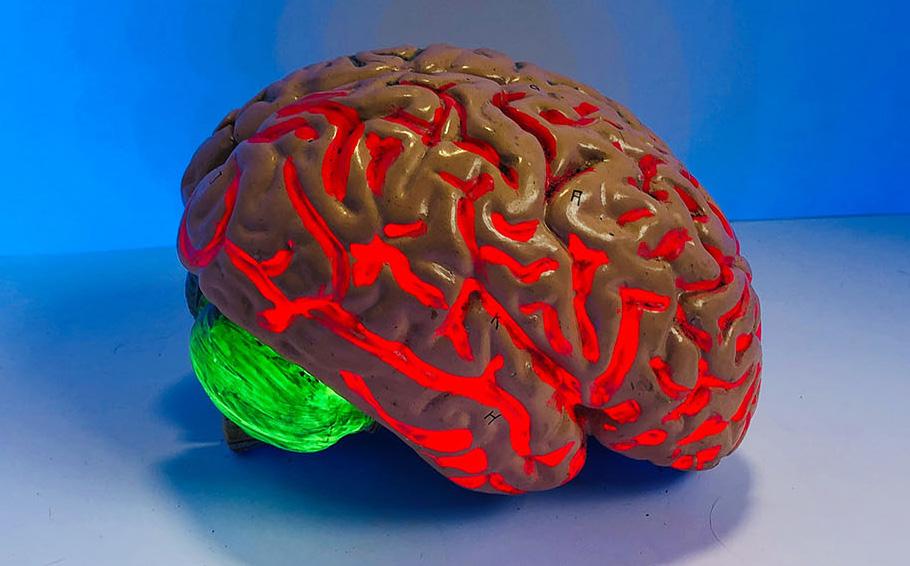
Experts say exercise and a healthy diet are key in
explained that physical activity and interactive activities are a great way to keep the brain stimulated and to keep the body moving. He suggests things such as in-person conversations, working out and learning new hobbies to help keep the brain active and engaged.
“Other things that help the brain are physical exercise, it’s a wonderful brain activity. Socialization is a wonderful whole brain activity as well. If you don’t use it, you lose it so if you don’t use your
muscles, they become weak–same thing with your brain,” Scharre explained.
“If you’re just sitting there watching TV, it might be entertaining but it isn’t always stimulating to the brain. However, socialization is great because you get out and you talk to people.”
“Get out and talk to people, that’s some form of brain stimulation. Learn to play the piano or learn a new language or write poetry. All those things are great activities for keeping the brain sharp.”

45? Here’s how often you should be screened for these health conditions
By James Ola Adisa Stacker Media
No one wants to run into a health problem that they could prevent. Correctly timed screening tests can detect diseases or health disorders before symptoms show, helping you get ahead of problems earlier. They also give you a deeper ownership of your own state of wellbeing.
Early detection helps inform lifestyle changes and monitoring. These changes reduce the risk of disease and can significantly increase your chances of finding effective treatments. For example, cases of colorectal cancer in the United States have been declining by approximately 1 percent every year due to better awareness of screening and lifestyle choices—though this is largely a reflection of adults over 65. Rates for adults aged 50-64 have been rising, and the generally advised age for colonoscopy has dropped from 50 to 45 in recent years in hopes that early detection will also improve outcomes.
Generally, doctors advise people under 50 with no medical problems to have a checkin visit every three years to make a general assessment of health. Yet, about half of Americans have skipped or delayed medical care because the cost is a significant barrier. Other reasons are lack of awareness, insurance coverage issues and lack of trust in service providers.
About eight out of every 10 adults in the United States visited a doctor as of 2020. The frequency of their visits depends on age and underlying health status. While this figure is encouraging, there remains a significant gap in screening frequency for older adults for several health conditions of concern. In an effort to plug that information gap, Guava Health outlines how frequently you should be screened for 10 health conditions and diseases, citing research from the Preventative Health Task Force, the Centers for Disease Control and Prevention and medical journals.
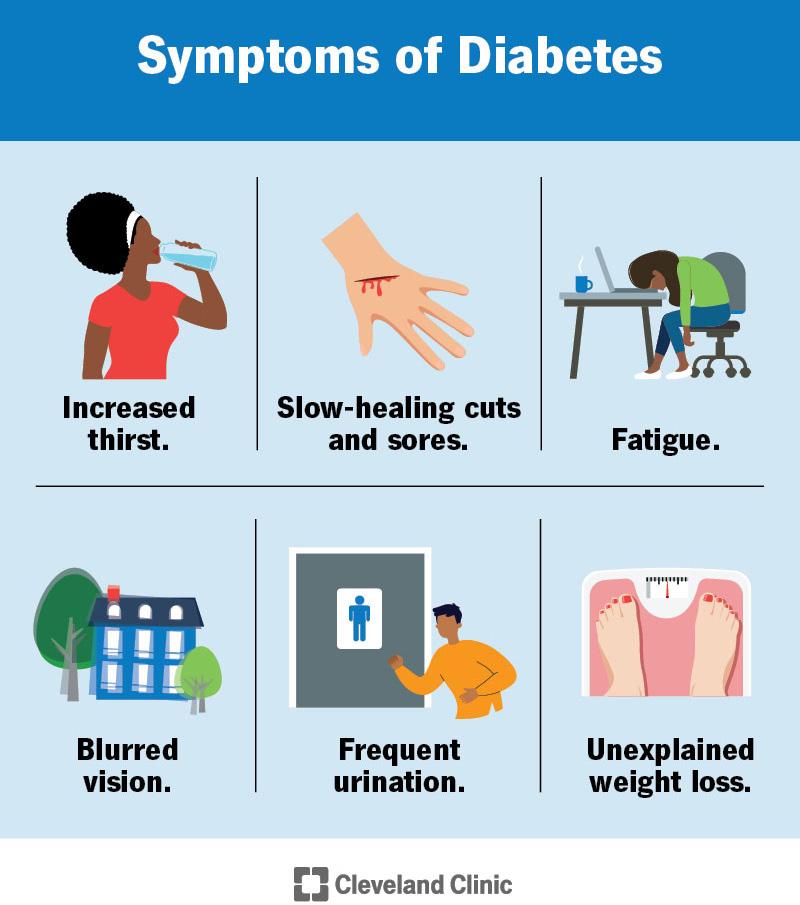
Diabetes Diabetes is a deceptively common disease; about one out of five people with diabetes are unaware that they have it. This makes screening for diabetes very important. Among U.S. adults, it is the leading cause of kidney failure and new cases of blindness, and is closely associated with increased risks of cardiovascular disease, nonalcoholic fatty liver disease and nonalcoholic inflammation of the liver. The U.S. Preventive Services Task Force recommends screening every three years. This is especially advised for adults over 35 or people with one or more risk factors— particularly those who have obesity or are generally overweight. To make a diagnosis, a doctor takes a blood sample for an A1c test, which shows the average blood sugar level for two to three months.
High cholesterol
High blood cholesterol increases one’s risk of heart disease, the leading cause of death in the United States, as well as stroke. Unfortunately, high cholesterol is asymptomatic, which makes regular blood screening crucial to its detection and treatment. Children and teenagers should get their cholesterol levels checked at least once when they’re between ages 9 and 11 and then every five years thereafter. Doctors recommend that adults check their cholesterol levels every four to six years. People with conditions like diabetes or heart disease and those with a family history of high cholesterol are advised to get screened more frequently.

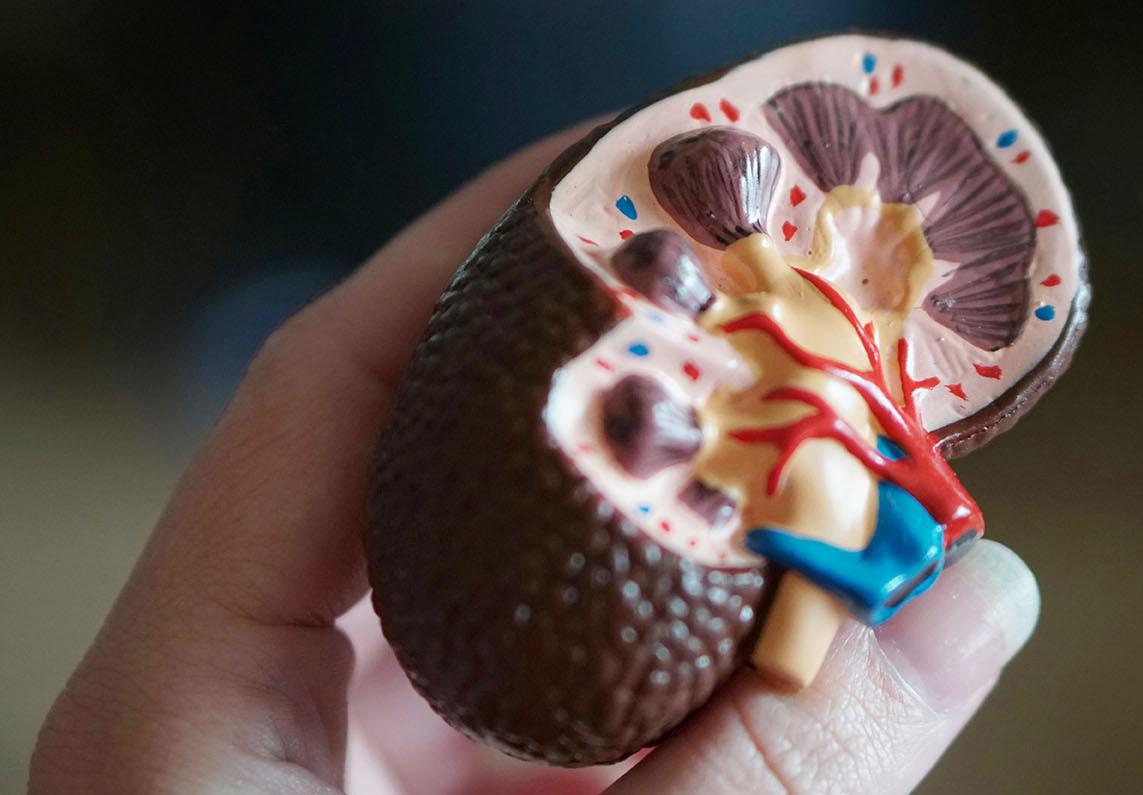
According to the Centers for Disease Control and Prevention, around one in seven American adults have chronic kidney disease. More alarming, the CDC estimates as much as nine of 10 adults do not realize they have the disease. Blood pressure monitoring, urinalysis, and blood tests help a doctor estimate a patient’s glomerular filtration rate, or how well your kidneys are filtering waste. The United States Preventive Services Task Force reported that extra research is needed to recommend routine screening. Other sources like the National Kidney Foundation suggest annual tests.
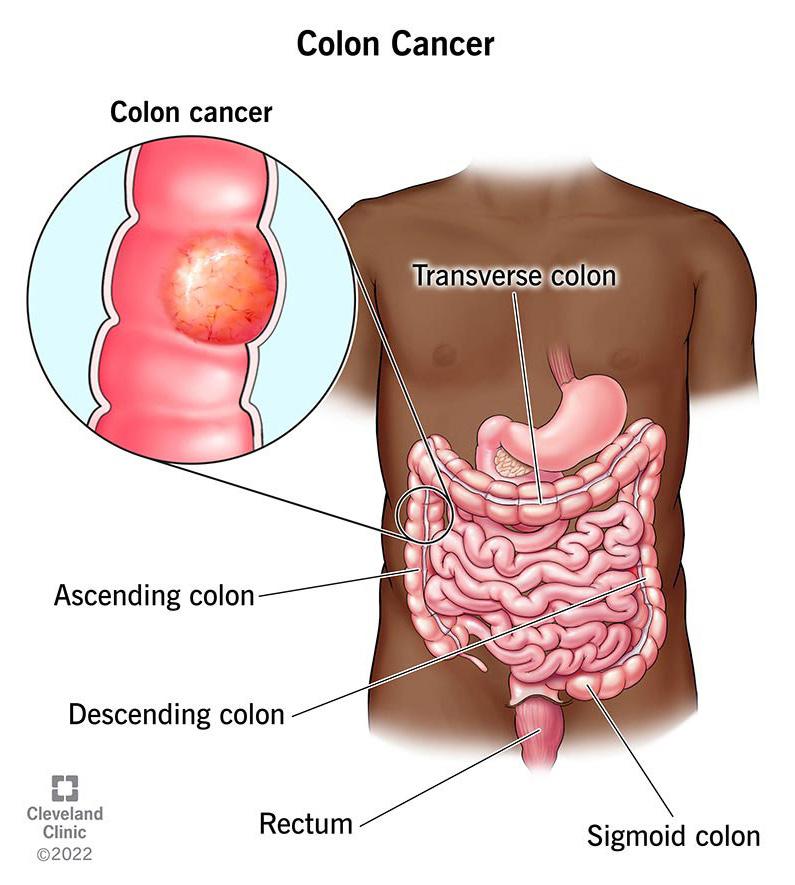
In the United States, colon cancer is the third most commonly diagnosed cancer in both men and women each year. To detect and prevent colon cancer early, routine screening should start at the age of 45. However, people with inflammatory bowel disease, a history of colon cancer, or a genetic disposition toward colorectal disease should start screening earlier. The United States Preventive Services Task Force suggests screening methods like stool tests, a CT colonography, a flexible sigmoidoscopy or a colonoscopy.
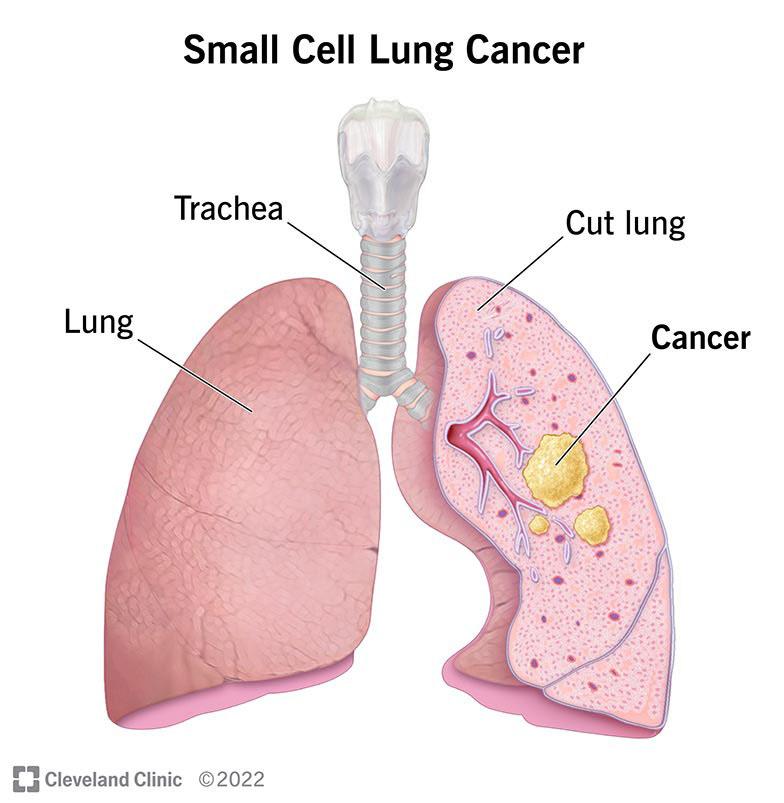
cancer deaths, making it the most common cause of mortality among cancer patients.
According to the American Cancer Society, those with a smoking history—including those currently smoking or those who have quit in the last 15 years—should screen yearly with a low-dose CT scan through age 74. Those with a 30 pack-year smoke history are also advised to screen—a pack-year is defined as one year of smoking one pack of cigarettes each day. The United States Preventive Services Task Force gives a similar recommendation. They recommend screening for adults between the ages of 50 to 80 who have a 20 pack-year history.

Breast cancer
In the United States, breast cancer is the most common cancer diagnosed in women after skin cancer, which is generally quantified across multiple skin cancer forms. Breast cancer is commonly diagnosed in women between the ages of 55 and 64. According to the U.S. Preventive Services Task Force (USPSTF), age is the most important risk factor. Based on this, the USPSTF recommends women aged 50 to 74 with an average risk for breast cancer have a mammography once every two years. Other organizations suggest screening once every year or once every two years for women aged 50 and above. As women get older, the number of breast cancer deaths prevented by screening rises. Mammography and Magnetic Resonance Imaging (MRI) are the most common screening tests for breast cancer.
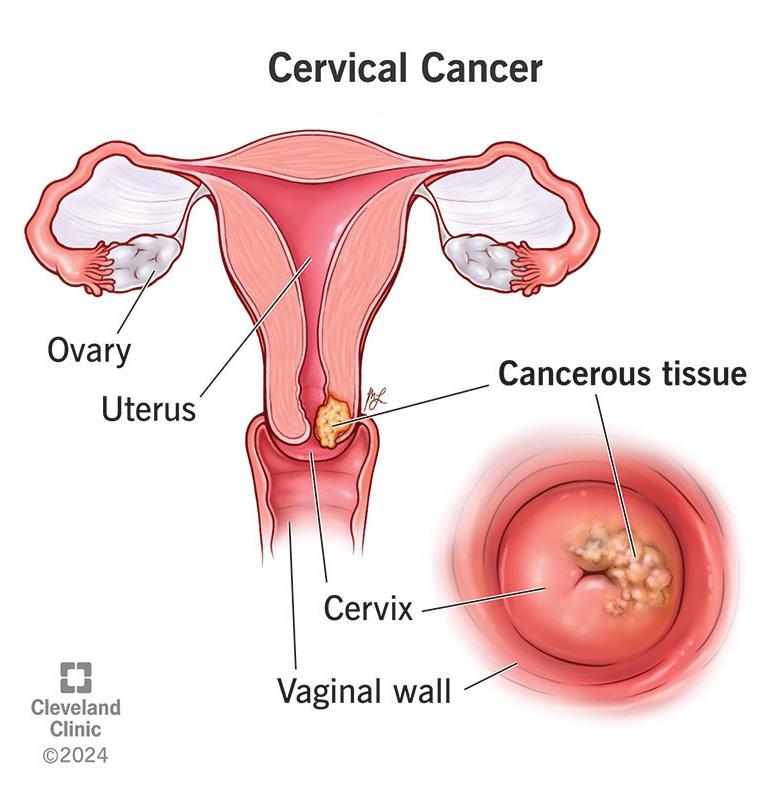
Human papillomavirus (HPV) is responsible for nearly half of all cervical cancers, and 80 percent of sexually active women will have this virus. This is the basis of the recommendations given for screening women for cervical cancer. The most common test performed to screen for cervical cancer in women is the Pap test, or Pap smear. As reported by the National Cancer Institute, the American Cancer Society (ACS) updated recommendations for cervical cancer screening in 2020. ACS recommends cervical cancer screening with an HPV test every 5 years for anyone with a cervix from age 25 to age 65. If HPV testing alone is not available, an HPV/ Pap co-test every 5 years or a Pap smear every 3 years is recommended. One significant change to the ACS’ recommendation here is that the prior recommendation for a Pap test every three years for women ages 21-24 was removed.

High blood pressure, also called hypertension, tends to have no symptoms and a diagnosis must be made by a medical professional. Testing for high blood pressure is important because the condition increases the risk of stroke. The American Heart Association considers blood pressure numbers within normal range if it measures 120/80 mm Hg— 120 is how much pressure your blood pushes against your artery walls as it beats and the 80 indicates the pressure when it rests between beats. The association recommends screening tests for adults 20 years and older with blood pressure at or below the normal range every two years, with the frequency of follow-up depending on one’s risk level. More frequent screening tests are recommended when blood pressure is higher than normal range. An athome kit is an efficient tool for monitoring your blood pressure—especially if you have high blood pressure.
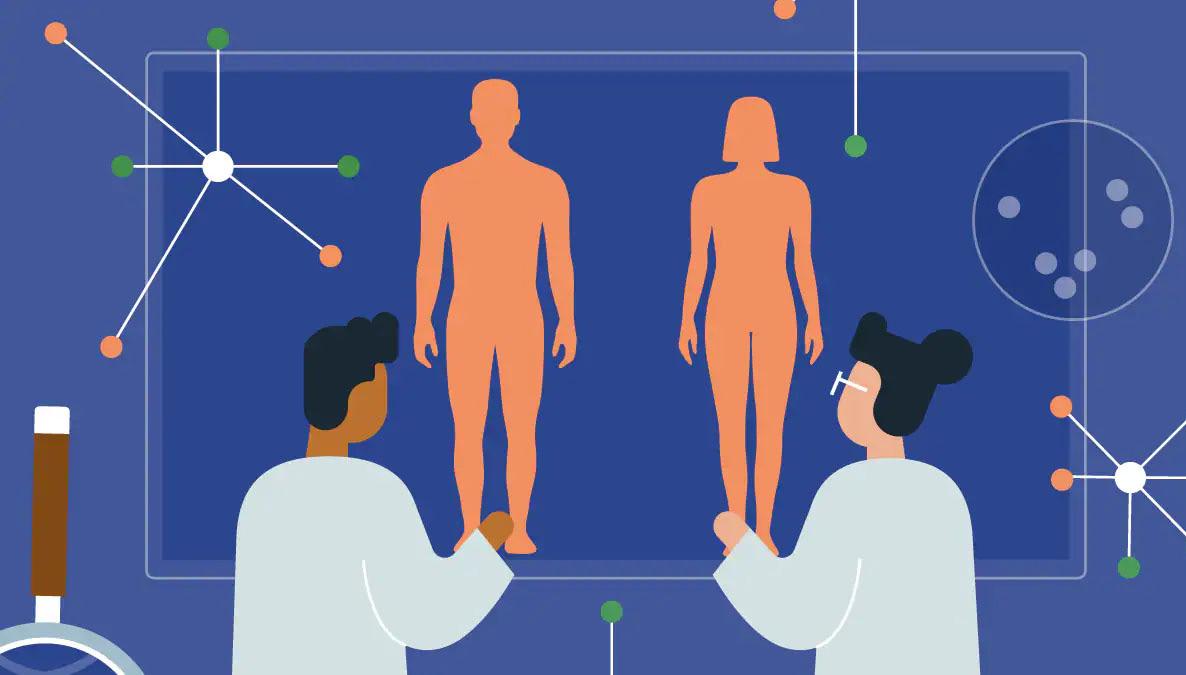
This category comprises a number of diagnosable diseases, including but not limited to gonorrhea, chlamydia, hepatitis B and C, HIV, and syphilis. CDC recommendations vary for each. In general all people 13-64 should be tested for HIV at least once. Sexually active women younger than 25 years should be tested for gonorrhea and chlamydia every year, and pregnant women should be tested for syphilis, HIV, hepatitis B, and hepatitis C starting early in pregnancy, with additional tests as needed depending on risk factor. CDC further recommends all sexually active gay and bisexual men be tested yearly for syphilis, chlamydia, and gonorrhea, as well as HIV. Overall in this category, screening recommendations are based less on age bracket than behavior, therefore regardless of age, adults over 45 should follow CDC guidelines based on their individual lifestyles.

Osteoporosis is the most common bone disease in the United States and is most prevalent among women. It is brought on by low bone mass that leads to weakening of bone tissue, structure, and strength over time. A study reported by the National Institutes of Health showed that women 65 years and older with healthy bone density can have a screening interval of 15 years after their initial test. According to the United States Preventive Services Task Force, while there is limited evidence of the advantages of screening for osteoporosis in males, bone measurement testing to prevent osteoporotic fractures in women is strongly recommended. Other factors that can influence screening frequency include age-specific diseases or when patients take certain medications.

By Stacy Brown NNPA Newswire
Sylvester Comprehensive Cancer Center
researchers Dr. Sophia George and Dr. Matthew Schlumbrecht are leading an ambitious study focused on ovarian cancer treatment for women of African descent. Their work, based at the University of Miami Miller School of Medicine, aims to address a critical gap in cancer research: the underrepresentation of Black women in clinical trials, specifically for the drug niraparib.
George, a molecular geneticist, and Schlumbrecht, a gynecologic oncologist, have expanded their research beyond the U.S. and the Caribbean to Africa. In July, they launched the study in Nigeria, giving them access to data from a population often overlooked in cancer research. According to the University of Miami, their goal is to understand how women of African ancestry metabolize drugs like niraparib, a PARP inhibitor that has transformed treatment for certain ovarian cancer patients.
While niraparib has proven effective, Black women made up only 1.6 percent of participants in the drug’s pivotal PRIMA study. George and Schlumbrecht’s new study is specifically designed to address this gap by enrolling







women of African descent.
“We know from other drugs that how women of African ancestry metabolize drugs can differ from those of European ancestry,” Dr. Schlumbrecht explained in a news release. “The data we gain will allow us to confirm appropriate dosing, counsel patients on side effects, lobby for government coverage, and ultimately expand access to this lifesaving treatment.”
The study’s significance has already drawn national attention. The White House highlighted it as part of President Biden’s Cancer Moonshot initiative, which seeks to cut the cancer death rate by at least 50 percent over the next 25 years.
“This recognition underscores the importance of our work,” said George. “We are increasing our ability to successfully identify and treat women of all backgrounds with ovarian cancer.”
George and Schlumbrecht said they plan to enroll patients from the U.S., the Caribbean, and Nigeria over the next three years, tracking their progress through ancillary studies on tumor DNA biomarkers and patient quality of life. The researchers will also explore homologous recombination deficiency profiles to assess whether the drug works as expected at the molecular level.
A key part of the study







which is used to treat certain ovarian
involves understanding the variability among Black women. “Not all Black women are the same,” Schlumbrecht noted. “By including participants from the U.S., Nigeria, and the Bahamas, we are gaining insights that will inform clinical practice globally.”
Their work in Nigeria is rooted in a long-standing collaboration with Nigerian medical professionals. Schlumbrecht has made five trips to the country, mentoring local researchers, teaching surgical techniques, and co-leading tumor boards with Nigerian oncologists. These





partnerships have been instrumental in establishing the study at the Ahmadu Bello University Teaching Hospital in Zaria.
“The clinical trial is truly a team effort,” said
Schlumbrecht. “This is an example of how we can eliminate ovarian cancer disparities when we work together across borders.”
As the study progresses, the researchers said they hope to provide critical data on drug safety and effectiveness and advance global efforts to reduce health inequities and improve outcomes for women of African descent.





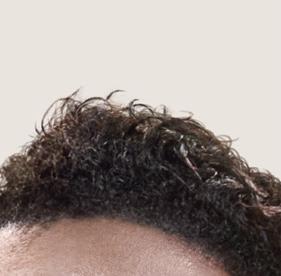














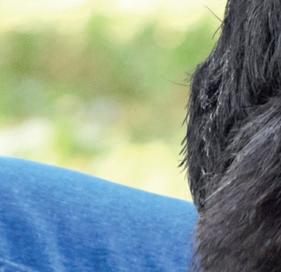




























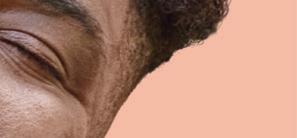


















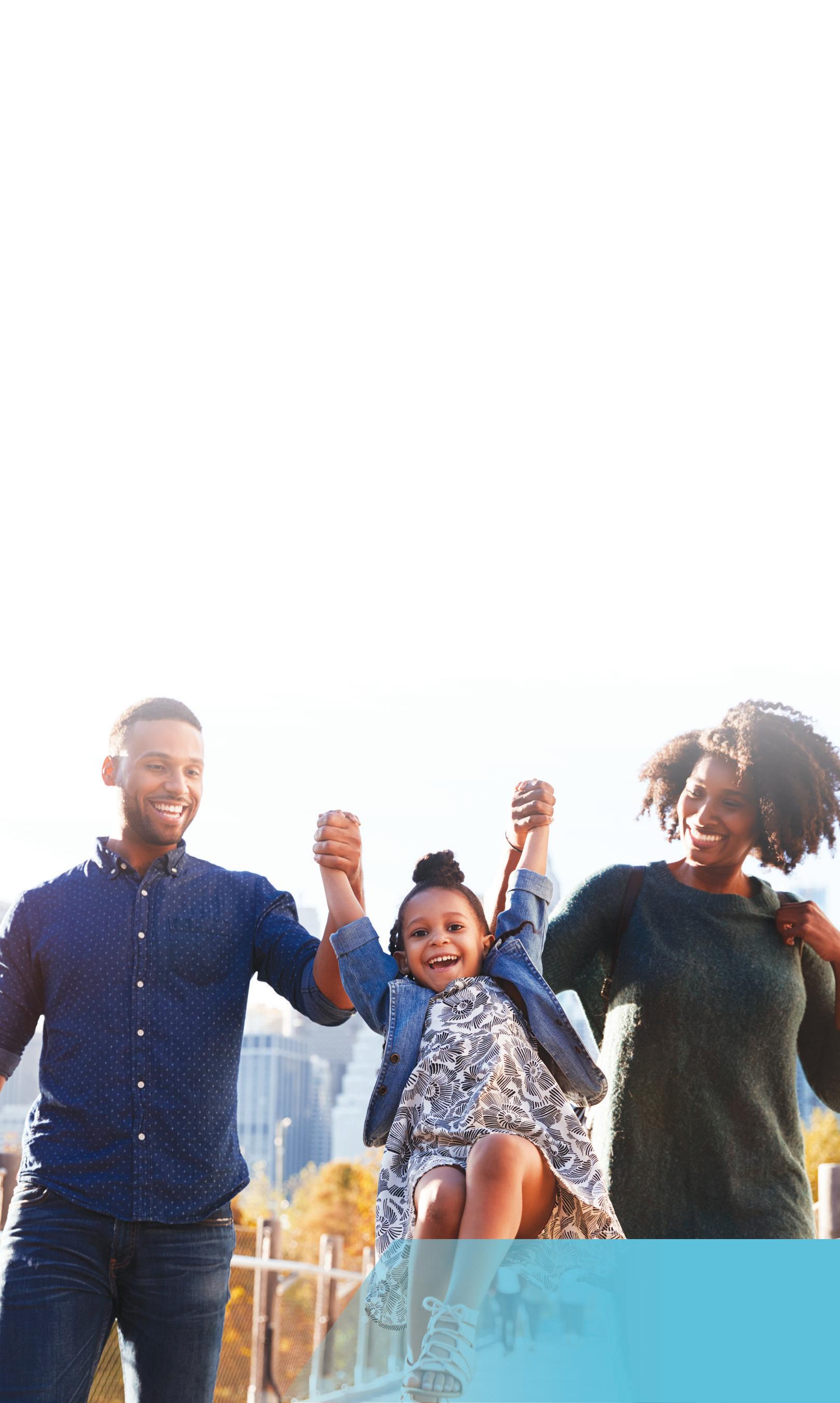

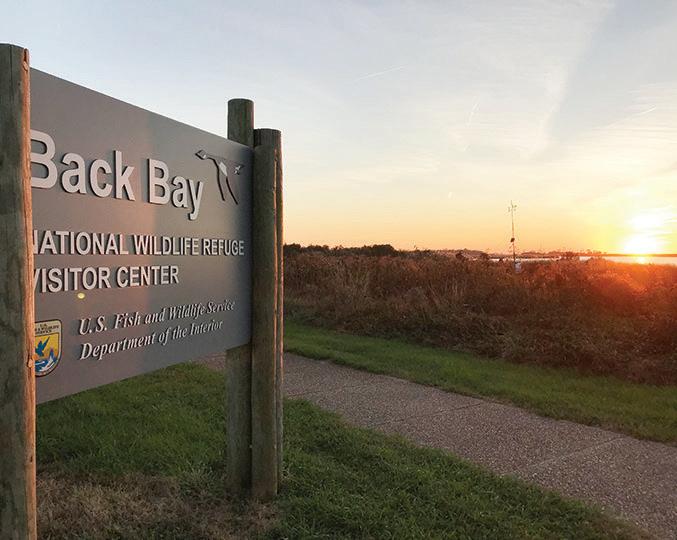

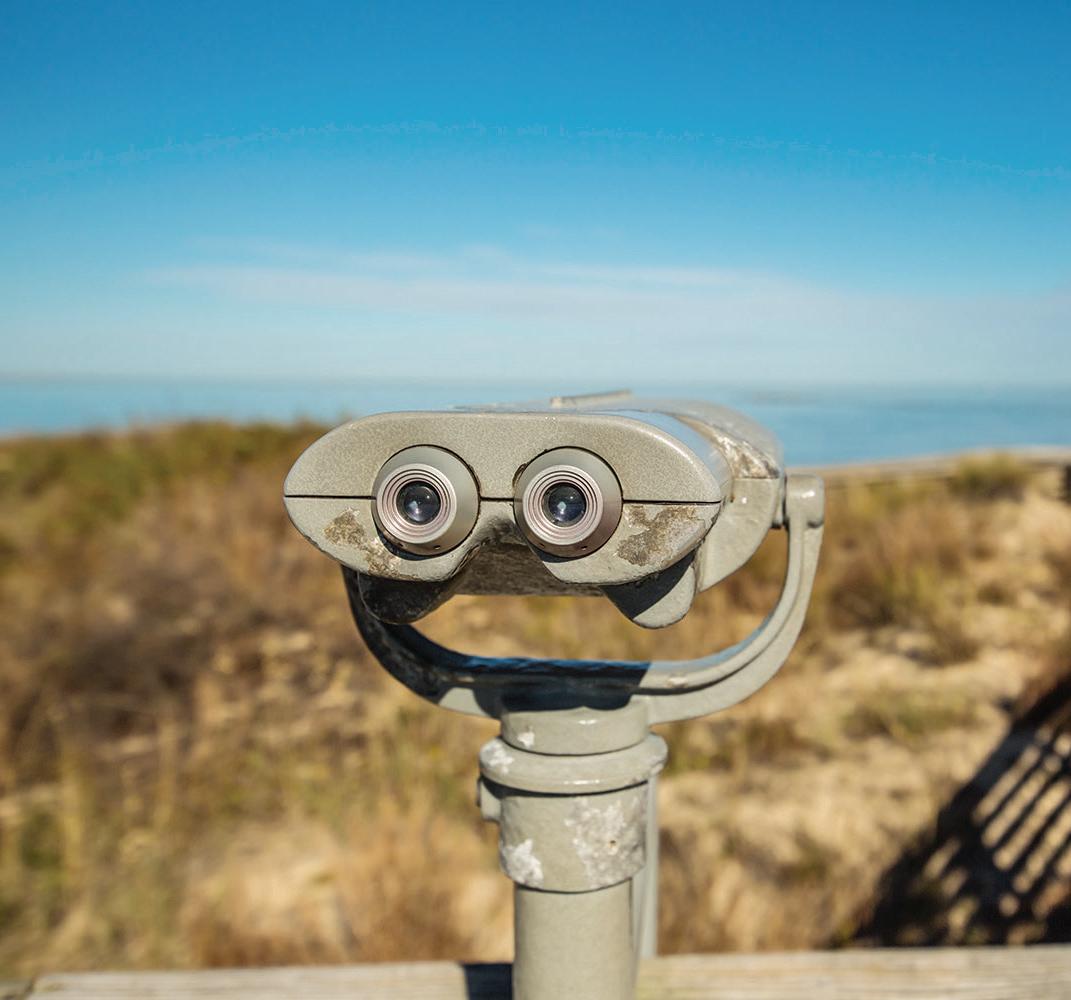

By Virginia Beach Visitors Bureau
According to the National Park Service (NPS), “there is the prevailing misconception that African Americans do not participate in outdoor recreation; however, this misconception is far from reality.” The NPS reports that “while racially exclusionary practices attempted to impose limits on African-American participation in outdoor recreation, African Americans participated in opportunities offered by the larger society and also carved out spaces of their own.”
Black travelers, like those of all other backgrounds and ethnicities, are seeking a respite. According to Pinterest’s summer travel report, “quiet life travel” is trending, and the increased interest in a “digital detox” is growing larger by the day. In the hustle and bustle of modern life, finding a quiet place to unwind and recharge is a precious gift. Virginia Beach, recently highlighted as one of the best cities for a good night’s sleep, offers a variety of serene spots to escape the noise and find your inner peace.
From the calm shores of First Landing State Park to the hushed trails of Back Bay National Wildlife Refuge, Virginia Beach provides ample opportunities to disconnect from the world and reconnect with nature.
Back Bay National Wildlife Refuge
Immerse yourself in the tranquility of this sprawling sanctuary, where the sound of the ocean waves and the rustling of marsh grasses create a symphony of serenity. Stroll along the orderly beaches, where you can find a secluded spot to watch the sunset or observe the diverse wildlife that calls this refuge home. With an expansive 8,000 acres of protected land, Back Bay National Wildlife Refuge offers a variety of habitats, from barrier islands to tidal marshes, providing endless opportunities for exploration and relaxation. Take a leisurely walk along the refuge’s trails, where you’ll be surrounded by the sights and sounds of nature.
First Landing State Park
Discover the charm of this unique park where the Chesapeake Bay meets the Atlantic Ocean. Explore miles of hiking and biking trails, each offering a different perspective on the park’s serene beauty. Find a quiet spot on the sandy beaches, where you can sit and watch the gentle waves lap at the shore. First Landing State Park is Virginia’s most visited state park and for good reason. With more than 2,800 acres of diverse ecosystems, including maritime forests, dunes, and tidal marshes, the park offers endless opportunities for exploration and relaxation.
False Cape State Park
Venture into this remote and undeveloped coastal area, where the only sounds you’ll hear are the whisper of the wind through the trees and the call of seabirds overhead. Hike or bike through the park’s diverse ecosystems, from maritime forests to sandy dunes, and find a peaceful place to observe the abundant wildlife that thrives in this protected habitat. With more than 4,300 acres of pristine coastal habitat, the park offers a rare opportunity to experience nature in its purest form.
Cape Henry Lighthouse
Visit this historic lighthouse, where the sound of the ocean provides a soothing backdrop to your exploration. Climb to the top for a breathtaking panoramic view of Virginia Beach, or find a quiet spot around the base for peaceful views of passing ships. Cape Henry Lighthouse is a true Virginia Beach icon. Built in 1792, it was the first federally-funded public works project of the newly-formed United States government. Today, it stands as a testament to the area’s rich history and offers a unique opportunity to connect with the past while enjoying the present.
Stumpy Lake Natural Area
Escape to this friendly oasis, where the sound of the water and the rustle of the trees create a calming atmosphere. Explore the park’s many trails, which wind through forests and wetlands, and find a secluded spot to sit and enjoy the serene beauty of the area. Stumpy Lake Natural Area is a hidden gem in Virginia Beach. With more than 1,400 acres of protected land, the park offers a variety of habitats from forests to wetlands providing endless opportunities to find your quiet place.
Edgar Cayce A.R.E.
Edgar Cayce’s Association for Research and Enlightenment offers numerous options for those looking to explore reflective places in the destination. The A.R.E offers a labyrinth modeled
after the Chartres Cathedral in France, providing a meditative walk for visitors. This facility also includes a Japanese-style meditation garden and a reflexology walk, ideal for finding inner peace.
The establishment also features a bamboo meditation garden designed to promote natural connections for visitors. Lastly, for those who want a comfortable, quiet space, try out the onsite meditation room. With soft lighting and calming décor, the room is ideal for those seeking a silent retreat.
Pleasure House Point Natural Area
Discover the tranquility of this 118-acre natural area, where the sound of the wind through the trees and the calls of the wildlife create a peaceful atmosphere. Explore the diverse ecosystems, from wetlands to forests, and find a solitary spot to observe the abundant wildlife that thrives in this protected habitat. Pleasure House Point Natural Area is a true urban oasis located in the heart of Virginia Beach.





By Ariyana Griffin AFRO Staff Writer agriffin@afro.com
Dr. Cynthia Sutherland knows what it means to serve.
Before establishing her nonprofit, Hidn TrezHER, in 2022, she served in the U.S. Army and worked as a global cybersecurity leader. Now, she’s on the frontlines of helping survivors heal from sexual abuse.
Startling statistics from the United States Centers for Disease Control and Prevention (CDC) reveal that “at least one in four girls and one in 20 boys in the United States experience child sexual abuse.” Adding insult to injury is the fact that “about 90 percent of child sexual abuse is perpetrated by someone known and trusted by the child or child’s family members.”
Hidn TrezHER is committed to directly empowering survivors, victims and their loved ones by providing them with the necessary tools, resources and support to work toward healing. While the process of healing may be different for each individual, the CDC states that sexual assault can affect how a person “thinks, acts, and feels over a lifetime,” which can result in “shortand long-term physical, mental and behavioral health consequences.”
Dr. Sutherland, in her book, “Letters to My Brown Girls: Four Phases to a Liberated Life Beyond

Childhood Sexual Abuse,” provides tools to overcoming the mental, emotional and spiritual barriers that one may face on their recovery journey.
She recently spoke to the AFRO about her organization’s start, purpose, self-care and more.
“After writing my book, a lot of
selfish.”
“You deserve to take care of yourself because if you can’t, no one will be able to,”she said.
When asked what survivors should keep in mind as they walk the path of healing their mind, body and soul, Dr. Sutherland said selfawareness is key.
“Being a survivor of childhood sexual abuse, I understand the importance of having an ally to help me on my healing journey.”
men started approaching me about how to navigate the conversation with their loved ones,” said Dr. Sutherland. “I started the nonprofit Hidn TrezHER with an overall mission to enlighten, empower and encourage survivors of childhood sexual abuse and the people who love them. Being a survivor of childhood sexual abuse, I understand the importance of having an ally to help me on my healing journey.”
Dr. Sutherland said that survivors of sexual abuse should remember that “self-care is not
At Pepco, we’re always working to ensure power outages are few and far between. While we work to prepare for storms, here's what you can do:
Download the Pepco app: use it to stay connected, and you can monitor our restoration progress by texting “Add Outage” to 48710.
Build an emergency kit: include the essentials you’ll need to last for 72 hours.
Make an emergency plan: ensure everyone in the house knows what to do if the power goes out. Learn more at
“Take your selfawareness journey to identify what are the triggers that trigger you and your trauma or any specific emotional situation you may have been through,” she told the AFRO
“I’m a global leader in cybersecurity, so I’ve dealt with racism and sexism. In the past, when situations used to trigger me, I would be very emotional. After my healing journey, I realized ‘Hey! There are the things that trigger me, here’s how I handle them.’ I was only able to learn that and able to respond to that through my self-awareness journey.”
Dr. Sutherland said that survivors should set aside a dedicated time just for self-care. “Whether it’s a Sunday night or a Wednesday night,” she said. “Block that time off for you to just take care of you.”
To learn more about the work and mental and physical resources that Hidn TrezHER provides visit Hidntrezher.org.
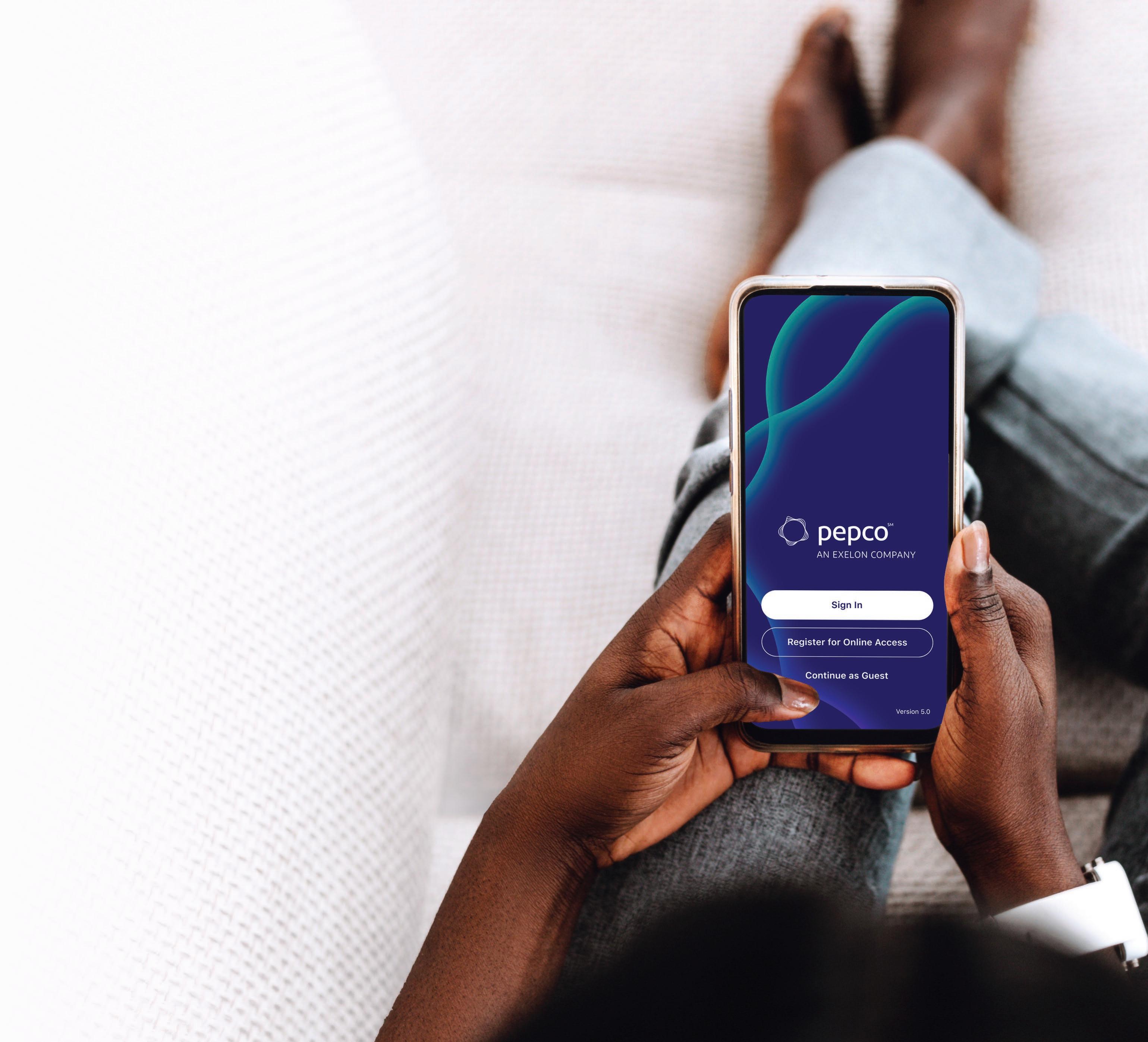

By Dom DiFurio Stacker Media
Leaps forward in tech and science this past year promise greater accessibility and quality of care for Americans suffering from nearly all forms of cancer.
Medical Technology Schools analyzed academic studies and resources from leading cancer research institutions, including the Mayo Clinic and the Cancer Research Institute, to round up the latest advancements in oncology—the science of diagnosing, preventing and treating various forms of cancer.
Evidence of cancer dates back to at least 1600 B.C. when medical records in Egyptian hieroglyphics described surgical procedures and an understanding of benign and malignant tumors. The modern science of oncology, which we now appreciate for its ability to greatly extend life expectancies for those living with cancer, began in earnest a little more than 100 years ago.
Around the turn of the 20th century, Marie Curie’s work in chemistry and radiology, or the science of Xrays and radiation, was fundamental to the evolution of cancer research. In the post-World War II years, advancements in computer technology allowed truly modern techniques for diagnosis and treatment to flourish, including robot-assisted, noninvasive surgery and targeted therapies that don’t harm healthy parts of the body.
An estimated 650,000 people re-
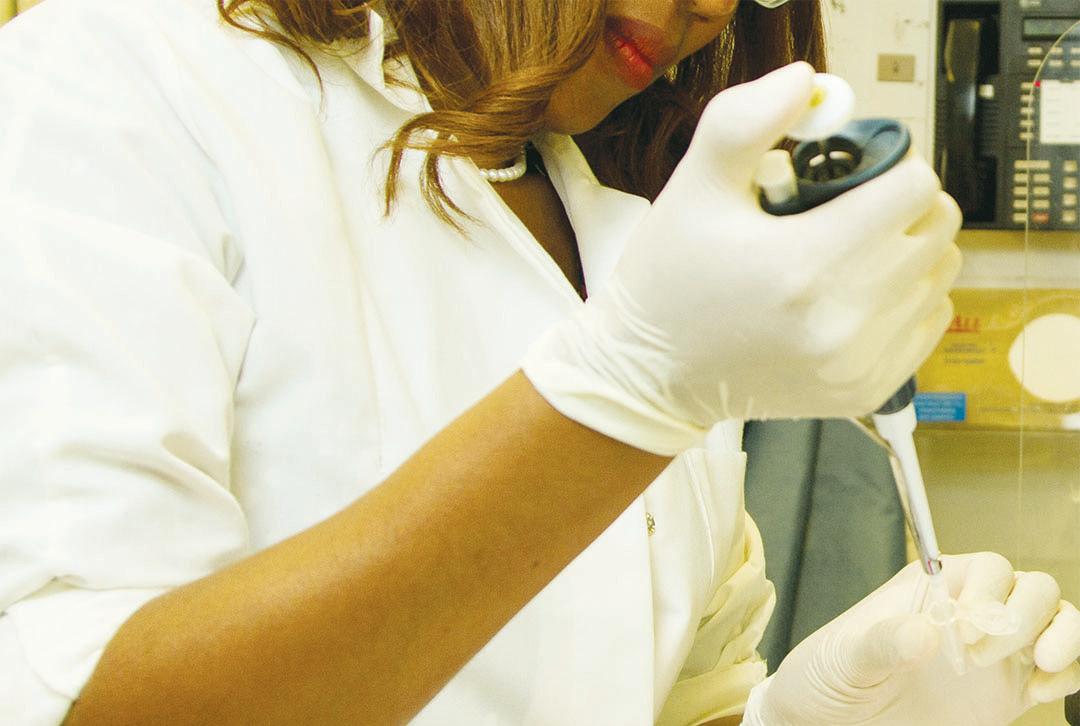
ceive chemotherapy or radiation therapy every year. New developments are underway by medical technology firms and researchers that have the potential to improve the effects of radiation therapy or bypass its need altogether for the millions of people diagnosed with cancer every year.
Artificial intelligence applications in cancer detection and treatment
Aspects of computer science algorithms have been put to work detecting cancer and pinpointing more effective forms of treatment for about the last 20 years, though research in the area is becoming more popular surrounding the launch of powerful and accessible generative AI tools in late 2022. Mentions of AI in cancer

research have appeared in more than 1,000 research journal publications each year since 2022.
One of the more recent research findings is the potential for AI to do a better job than humans in spotting hard-to-identify signs of emerging colon and rectal cancer, the second most common cause of death from cancer and the number one cause for men under 50. The study adds to a growing body of research suggesting AI algorithms can improve early detection, one of the best-known ways to beat colorectal cancer.
Genome sequencing opens up the potential for more targeted treatments Genome sequencing, or the map-


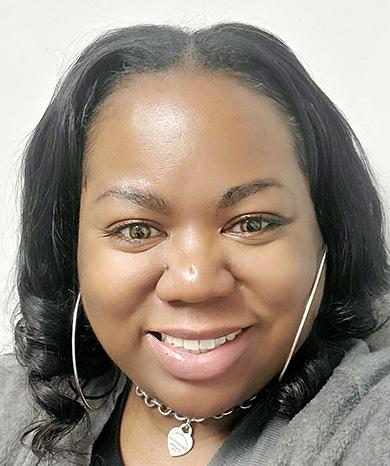
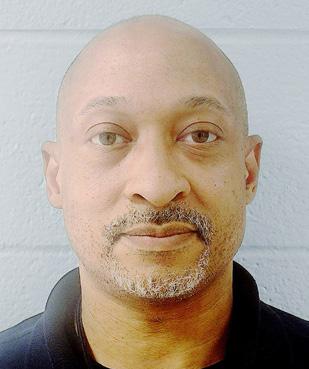
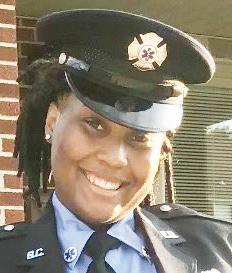
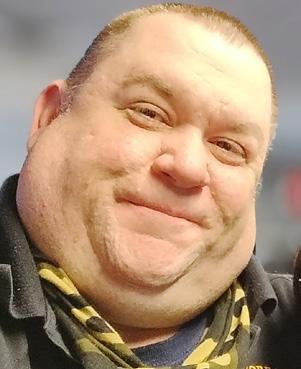


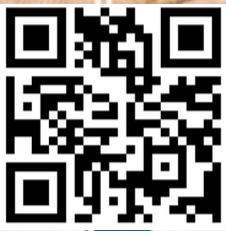

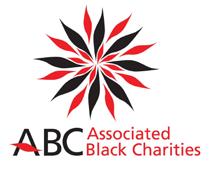
ping of the genetic tissues within the human body, has evolved since the 1980s as a tool for personalizing health care treatments rather than applying potentially less-effective blanket treatments.
Cancers involve mutations of the cell that can vary greatly from case to case. In January, researchers published the largest whole-genome sequencing study of its kind. The study included data on nearly 14,000 tumors, which the authors believe will impact how doctors decide on treatments and therapies for cancer patients.
Reducing the need for mastectomy procedures
Another study published in the Journal of Clinical Oncology could provide hope for those diagnosed with breast cancer who have multiple tumors in one or more of their breasts.
Typically, doctors might advise a person with multiple breast tumors to pursue a mastectomy whereby the breast tissue is removed through surgery. The study demonstrated that tumor removal combined with radiation treatment can be effective at removing the cancer and preventing any recurrence while avoiding a full mastectomy.
“Some patients may still prefer or require a mastectomy, and that is a perfectly fine approach,” Mayo Clinic surgeon and lead author of the study Dr. Judy Boughey said in a statement last year. “But being able
to provide more patients diagnosed with breast cancer with a choice is a great step forward.”
Less invasive treatments for head, neck cancers
Advancements in proton beam therapy promise to provide a more targeted approach to treatment for people suffering from head and neck cancers located near vital body parts, like the brain and spinal cord.
While not typically a painful procedure, few centers offer proton therapy treatment, according to Johns Hopkins. This past year, regulators approved the use of a new proton therapy medical device made by Israeli firm P-Cure, which produces a system that is compact enough to fit into existing radiation therapy rooms.
Precise biology-guided radiation for bone and lung cancer therapy
Lung cancer causes 1 in 5 deaths among all forms of cancer and is the leading cause of all cancer deaths. This past year, top cancer centers including the University of Texas Southwestern Medical Center rolled out new biology-guided radiation technology to help target multiple cancerous areas within the affected body parts while not damaging healthy surrounding tissue. Using radioactivity, the treatment causes cancer cells to produce a signal that it can target with beams of radiation.


SUPERIOR COURT OF THE DISTRICT OF COLUMBIA PROBATE DIVISION ADMINISTRATION NO. 2024ADM001135 KEVIN YOUNG Name of Decedent Notice of Appointment, Notice to Creditors and Notice to Unknown Heirs
DONICA YOUNG, whose address is 8734 RITCH-
BORO ROAD, DISTRICT HEIGHTS, MD 20747 was appointed Personal Representative of the estate of KEVIN YOUNG who died on NOVEMBER 14, 2023 without a Will and will serve without Court supervision. All unknown heirs and heirs whose whereabouts are unknown shall enter their appearance In this proceeding. Objections to such, appointment shall be filed With the Register of Wills, D.C., Building A, 515 5th Street, N.W., 3rd Floor, Washington, D.C. 20001, on or before APRIL 04, 2025. Claims against the decedent shall be presented to the undersigned with a copy to the Register of Wills or filed with the Register of Wills with a copy to the undersigned, on or before APRIL 04, 2025 or be forever barred. Persons believed to be heirs or legatees of the decedent who do not receive a copy of this notice by mail within 25 days of its publication shall so inform the Register of Wills, including name, address and relationship. Date of first publication: OCTOBER 04, 2024 Name of newspaper and/or periodical: Washington Law Reporter AFRO American Newspapers
DONICA YOUNG
Personal Representative
TRUE TEST COPY REGISTER OF WILLS 10/04, 10/11, 10/18/24
SUPERIOR COURT OF THE DISTRICT OF COLUMBIA PROBATE DIVISION ADMINISTRATION NO. 2024ADM001144
RICHARD T. LUCAS Name of Decedent Notice of Appointment, Notice to Creditors and Notice to Unknown Heirs
be presented to the undersigned with a copy to the Register of Wills or filed with the Register of Wills with a copy to the undersigned, on or before APRIL 04, 2025 or be forever barred. Persons believed to be heirs or legatees of the decedent who do not receive a copy of this notice by mail within 25 days of its publication shall so inform the Register of Wills, including name, address and relationship. Date of first publication: OCTOBER 04, 2024 Name of newspaper and/or periodical: Washington Law Reporter AFRO American Newspapers
DONNA RENEE HENRY CRYER Personal Representative TRUE TEST COPY REGISTER OF WILLS 10/04, 10/11, 10/18/24
SUPERIOR COURT OF THE DISTRICT OF COLUMBIA PROBATE DIVISION ADMINISTRATION NO. 2024ADM001130 GLADIES S. BARKER Name of Decedent Notice of Appointment, Notice to Creditors and Notice to Unknown Heirs PATRICIA ELAINE BARKER, whose address is 415 N. KENMORE ST. ARLINGTON, VA 22201-1725, was appointed
RANDALL K. LUCAS, whose address is 11203 PETWORTH LN GLENN DALE MD 20769, was appointed Personal Representative of the estate of RICHARD T. LUCAS who died on SEPTEMBER 10, 2023 without a Will and will serve without Court supervision. All unknown heirs and heirs whose whereabouts are unknown shall enter their appearance In this proceeding. Objections to such, appointment shall be filed With the Register of Wills, D.C., Building A, 515 5th Street, N.W., 3rd Floor, Washington, D.C. 20001, on or before APRIL 04, 2025. Claims against the decedent shall be presented to the undersigned with a copy to the Register of Wills or filed with the Register of Wills with a copy to the undersigned, on or before APRIL 04, 2025 or be forever barred. Persons believed to be heirs or legatees of the decedent who do not receive a copy of this notice by mail within 25 days of its publication shall so inform the Register of Wills, including name, address and relationship. Date of first publication: OCTOBER 04, 2024 Name of newspaper and/or periodical: Washington Law Reporter AFRO American Newspapers
RANDALL K. LUCAS
Personal Representative TRUE TEST COPY REGISTER OF WILLS 10/04, 10/11, 10/18/24
SUPERIOR COURT OF THE DISTRICT OF COLUMBIA PROBATE DIVISION 2024FEP000109 FEBRUARY 20, 2017 Date of Death ALICE G RAY Name of Decedent
NOTICE OF APPOINTMENT OF FOREIGN PERSONAL REPRESENTATIVE AND NOTICE TO CREDITORS
RENEE THOMPSON whose address is 309 ROLLING VALLEY DRIVE, FREDERICKSBURG, VA 22405 was appointecd representative of the estate of ALICE G RAY deceased, by the ORPHAN’S Court for PRINCE GEORGE’S County, State of MARYLAND, on SEPTEMBER 12, 2024. Service of process may be made upon EUGENE LATSON III, 7730 HANOVER PKWY APT #304 GREENBELT MD 20770 whose designation as District of Columbia agent has been filed with the Register of Wills, D.C. The decedent owned the following District of Columbia real property: 4530 DOUGLAS ST NE WASHINGTON DC 20019. Claims against the decedent may be presented to the undersigned and filed with the Register of Wills for the District of Columbia, Building A, 515 5th Street, N.W., 3rd Floor, Washington, D.C. 20001 within 6 months from the date of first publication of this notice.
Date of first publication: OCTOBER 11, 2024 Name of newspaper, and/or periodical: Daily Washington Law Reporter AFRO-American
PATRICIA ELAINE BARKER
RENEE THOMPSON Personal Reperesenative
TRUE TEST COPY REGISTER OF WILLS 10/11, 10/18, 10/25/24
SUPERIOR COURT OF THE DISTRICT OF COLUMBIA PROBATE DIVISION ADMINISTRATION NO. 2024ADM1154 GWENDOLYN AMY GRAHAM Name of Decedent Notice of Appointment, Notice to Creditors and Notice to Unknown Heirs
CONSTANCE ELAINE YOUNG, whose address is 3001 BLADENSBURG RD APT 619 NE WASHINGTON, DC 20018, was appointed Personal Representative of the estate of GWENDOLYN AMY GRAHAM who died on JANUARY 05, 2010 without a Will and will serve without Court supervision. All unknown heirs and heirs whose whereabouts are unknown shall enter their appearance In this proceeding. Objections to such, appointment shall be filed With the Register of Wills, D.C., Building A, 515 5th Street, N.W., 3rd Floor, Washington, D.C. 20001, on or before APRIL 11, 2025. Claims against the decedent shall be presented to the undersigned with a copy to the Register of Wills or filed with the Register of Wills with a copy to the undersigned, on or before APRIL 11, 2025 or be forever barred. Persons believed to be heirs or legatees of the decedent who do not receive a copy of this notice by mail within 25 days of its publication shall so inform the Register of Wills, including name, address and relationship. Date of first publication: OCTOBER 11, 2024 Name of newspaper and/or periodical: Washington Law Reporter AFRO American Newspapers
CONSTANCE ELAINE YOUNG Personal Representative
TRUE TEST COPY REGISTER OF WILLS 10/11, 10/18, 10/25/24
SUPERIOR COURT OF THE DISTRICT OF COLUMBIA PROBATE DIVISION
ADMINISTRATION NO. 2024ADM1176
MARKTWAN HARGRAVES Name of Decedent Notice of Appointment, Notice to Creditors and Notice to Unknown Heirs
JAMES HARGRAVES, whose address is 3090 ESSER PL WALDORF MD 20603, was appointed Personal Representative of the estate of MARKTWAN HARGRAVES who died on JULY 20, 2023 without a Will and will serve without Court supervision. All unknown heirs and heirs whose whereabouts are unknown shall enter their appearance In this proceeding. Objections to such, appointment shall be filed With the Register of Wills, D.C., Building A, 515 5th Street, N.W., 3rd Floor, Washington, D.C. 20001, on or before APRIL 11, 2025. Claims against the decedent shall be presented to the undersigned with a copy to the Register of Wills or filed with the Register of Wills with a copy to the undersigned, on or before APRIL 11, 2025 or be forever barred. Persons believed to be heirs or legatees of the decedent who do not receive a copy of this notice by mail within 25 days of its publication shall so inform the Register of Wills, including name, address and relationship. Date of first publication: OCTOBER 11, 2024 Name of newspaper and/or periodical: Washington Law Reporter AFRO American Newspapers
JAMES HARGRAVES Personal Representative TRUE TEST COPY REGISTER OF WILLS 10/11, 10/18, 10/25/24
SUPERIOR COURT OF THE DISTRICT OF COLUMBIA
PROBATE DIVISION ADMINISTRATION NO. 2024ADM001180
DOROTHY M. SMITH AKA
DOROTHY MAE SMITH Name of Decedent
JASON KISNER KISNER LAW, LLC 8401 CORPORATE DRIVE, SUITE 650 HYATTSVILLE, MD 20785 Notice of Appointment, Notice to Creditors and Notice to Unknown Heirs
SHARLENE BOWYER , whose address is 3733 EVANS TRAIL WAY, BELTSVILLE, MD 20705 was appointed Personal Representative of the estate of DOROTHY M. SMITH AKA DOROTHY MAE SMITH, who died on AUGUST 19, 2023 with a Will and will serve without Court supervision. All unknown heirs and heirs whose whereabouts are unknown shall enter their appearance In this proceeding. Objections to such, appointment shall be filed With the Register of Wills, D.C., Building A, 515 5th Street, N.W., 3rd Floor, Washington, D.C. 20001, on or before APRIL 18, 2025. Claims against the decedent shall be presented to the undersigned with a copy to the Register of Wills or filed with the Register of Wills with a copy to the undersigned, on or before APRIL 18, 2025 or be forever barred. Persons believed to be heirs or legatees of the decedent who do not receive a copy of this notice by mail within 25 days of its publication shall so inform the Register of Wills, including name, address and relationship. Date of first publication: OCTOBER 18, 2024 Name of newspaper and/or periodical: Daily Washington Law Reporter AFRO American Newspapers
SHARLENE BOWYER Personal Representative
TRUE TEST COPY REGISTER OF WILLS 10/18, 10/25, 11/01/24
SUPERIOR COURT OF THE DISTRICT OF COLUMBIA PROBATE DIVISION ADMINISTRATION NO. 2024ADM001192 MABLE J. CHEEK Name of Decedent
THOMAS H. QUEEN, ESQ. 7961 EASTERN AVENUE SUITE 304 SILVER SPRING, MD 20910 Notice of Appointment, Notice to Creditors and Notice to Unknown Heirs
MONICA C. HERNANDEZ, whose address is 12814 WESTBROOK DRIVE, FAIRFAX, VA 22030 was appointed Personal Representative of the estate of MABLE J. CHEEK, who died on SEPTEMBER 03, 2024 with a Will and will serve without Court supervision. All unknown heirs and heirs whose whereabouts are unknown shall enter their appearance In this proceeding. Objections to
WILLIE ROSINA TATE Name of Decedent WILLIAM A. BLAND, ESQ 80 M STREET SE SUITE 330 WASHINGTON, DC 20003 Notice of Appointment, Notice to Creditors and Notice to Unknown Heirs HAKIM TATE, whose address is 411 MILLWOOF DRIVE CAPITOL HEIGHTS, MD 20743 was appointed Personal Representative of the estate of WILLIE ROSINA TATE, who died on JANUARY 14, 2009 without a Will and will serve without Court supervision. All unknown heirs and heirs whose whereabouts are unknown shall enter their appearance In this proceeding. Objections to such, appointment shall be filed With the Register of Wills, D.C., Building A, 515 5th Street, N.W., 3rd Floor, Washington, D.C. 20001, on or before APRIL 18, 2025. Claims against the decedent shall be presented to the undersigned with a copy to the Register of Wills or filed with the Register of Wills with a copy to the undersigned, on or before APRIL 18, 2025 or be forever barred. Persons believed to be heirs or legatees of the decedent who do not receive a copy of this notice by mail within 25 days of its publication shall so inform the Register of Wills, including name, address and relationship. Date of first publication: OCTOBER 18, 2024 Name of newspaper and/or periodical: Daily Washington Law Reporter AFRO American Newspapers
HAKIM TATE Personal Representative
TRUE TEST COPY REGISTER OF WILLS 10/18, 10/25, 11/01/24
Quantitative Modeler, Fannie Mae (Washington, DC) Apply math, statistical, econometric techniques to provide innovative, thorough & practical solutions. Conduct/assess ad-hoc quant analyses, modeling, prgmg using SAS, SQL, Python, & R. Use advanced data mining & or statistical techs to devel analytic insights, hypotheses, recommendations. ID opps to apply quant methods to improve performance. Implmt validation/testing strategies & assess qlty/risk of model methodologies, outputs, & processes. Communicate tech subject matter clearly & concisely. Conduct theoretical/empirical RS. Analyze to assess qlty/risk of model methodologies, outputs, processes & reconciliation w/ tools & systems created w/ R & Python. Req: Masters in Econ or Stat + 3 yrs exp in fin’l analysis/ modeling in mrtg finance industry incl quant analysis, model dvlpmt implmtn using SAS, SQL, R, Python. To apply search Quantitative Modeler at fanniemae.com/careers.
Software Engineer - Fannie Mae, Washington, DC. Enterprise Analytics & Modeling. Dsgn/devel complex s/w solutions to meet customer needs. Maintain existing s/w. Perform product testing incl testing & evaluating s/ware, usability testing, UAT. Use architectural principles to integrate app interfaces. Implmnt s/w tech & coord end-to-end task. Analyze data to ID trends or relationships to inform conclusions. Req: Masters in Comp Sci or Data Science + 2 yrs exp in s/w devel in the fin. svcs industry. Exp must incl Python, MS-SQL, Postgre SQL, Shell Scripting, AWS Services, RESTful, SOAP, GIT & Jenkins. Work in ofc & remotely. Search Software Engineer @ fanniemae.com/careers.



BOARD OF LIQUOR LICENSE COMMISSIONERS FOR BALTIMORE CITY
NOTICE – OCTOBER 2024
Petitions have been filed by the following applicants for licenses to sell alcoholic beverages at the premises set opposite their respective names.
The real property for these applications will be posted on or about October 14, 2024. Written protests concerning any application will be accepted until and including the time of the hearing. Public hearings may be scheduled on or after October 24, 2024 at 10:30 AM in City Hall; 100 N. Holliday Street, Room 215, Baltimore, Maryland 21202. Please visit llb.baltimorecity.gov under the link for & Hearing Schedules & for confirmation of the date, time, and place for all matters being heard by the Board.
1. CLASS “A” BEER, WINE & LIQUOR LICENSE
Applicant: 4332 Erdman Business, LLC T/a Trade Name Pending - Avinash Kaur and Aaron Lonnie Browning Petition: Transfer of ownership requesting delivery of alcoholic beverages Premises: 4332 Erdman Avenue 21213 (City Council District: 13th;
District: 46th)
2. CLASS “A-7” BEER, WINE & LIQUOR LICENSE
Applicant: Dhana Laxmi Group, LLC T/a Bacchus Bar & Liquor - Nemika Karki Thapa Petition: Transfer of ownership Premises: 1220 W. North Avenue 21217 (City Council District: 7th; State Legislative District: 40th)
3. CLASS “B” BEER, WINE & LIQUOR LICENSE
Applicant: Adee’s, LLC T/a Adee’s Coffee Roasters
CASINO VIDEO LOTTERY FACILITY LICENSE
Applicant: CBAC Borrower, LLC T/a Horseshoe Baltimore - Jacob Witmer Petition: Transfer of ownership with continuation of live entertainment, outdoor table service, and off-premises catering
Premises: 1525 Russell Street, 2105 Haines Street, & 1555 Warner Street 21230 (City Council District: 10th; State Legislative District: 46th)
5. CLASS “BD7” BEER, WINE & LIQUOR LICENSE
Applicant: Hero Restoration, LLC T/a Park Bench Pub - Tyler Hoke
Petition: Transfer of ownership (Amended)
Premises: 1747-49 Belt Street 21230 (City Council District: 11th; State Legislative District: 46th)
Applicant: Ghutra Liquors, Inc. T/a Kitty’s Lounge - Harpreet Singh
Petition: Transfer of ownership
Premises: 3208 Greenmount Avenue 21218
(City Council District: 14th; State Legislative District: 43A)
Applicant: Koco’s Pub, Inc. T/a Koco’s Pub - Marcella L. Knight

CITY OF BALTIMORE
DEPARTMENT OF PUBLIC WORKS
OFFICE OF ENGINEERING AND CONSTRUCTION
NOTICE OF LETTING
Sealed Bids or Proposals, in duplicate addressed to the Board of Esti mates of the Mayor and City Council of Baltimore and marked for ENVIRONMENTAL RESTORATION CONTRACT NO. 4052- MAIDEN’S CHOICE TRIBUTARY STREAM RESTORATION will be received at the Office of the Comptroller, Room 204 City Hall, Baltimore, Maryland until 11:00 A.M on November 20, 2024. Positively no bids will be received after 11:00 A.M. Bids will be publicly opened by the Board of Estimates and can be watched live on CharmTV’s cable channel 25/1085HD; charmtvbal timore.com/watch-live or listen in at (443) 984-1696 (ACCESS CODE: 0842939) from City Hall at Noon. The Contract Documents may be exam ined, without charge, at Contract Administration 4 South Frederick Street Baltimore, Maryland 21202 on the 3 rd floor (410) 396-4041 as of ber 18, 2024 and copies may be purchased for a non-refundable cost of 100.00. Conditions and requirements of the Bid are found in the bid package. All contractors bidding on this Contract must first be prequalified by the City of Baltimore Contractors Qualification Committee. Interested parties should call (410) 396-6883 or contact OBC at 4 S Frederick St., 4 th Floor, Baltimore, MD 21202. If a bid is submitted by a joint venture (“JV”), then in that event, the document that established the JV be submitted with the bid for verification purposes. The Prequalifi cation Category required for bidding on this project is B02552 - Sewer Construction, D02240 - Erosion and Sediment Control, D02800Landscaping, F02200 – Earthwork and Site Preparation, and G90128 – Urban Stream Restoration.

Cost Qualification Range for this work shall be $2,000,000.01 to $3,000,000.00
For further inquiries about purchasing bid documents, please contact the assigned Contract Administrator Doreen.Diamond@baltimorecity.gov and dpwbidopportunities@baltimorecity.gov
A “Pre-Bidding Information” session will be conducted virtually on October 31, 2024 at 1:00 p.m.. Vendor can access this Microsoft Teams virtual meeting by utilizing the following ID and passcode: Meeting ID: 227 321 191 576 Passcode: JoAjsO or Vendors can call Phone Conference ID: 1 667-228-6519 Passcode: 267 101 274#.
Principal items of work for this contract include, but are not limited to:
* Stream grading, relocation, backfilling, and stabilization including:
o Placement of channel bed material
o Construction of In-steam and channel bank stone, rock structures
o Removal and placement of soils, aggregates, boulders
o Installation of wood stream structures
* Extension of existing storm drains outfalls including pipes, manholes and headwalls
* Construction of gabion retaining wall
*Encasement of existing sanitary sewer
* Return site to its original condition
* Planting, landscaping, and invasive species management
The BBE/ MBE goal is 22% The WBE/DBE goal is 16%
APPROVED: APPROVED: Clerk, Board of Estimates Khalil Zaied Acting Director Department of Public Works
City of Baltimore Department of Finance Bureau of Procurement
Sealed proposals addressed to the Board of Estimates of Baltimore will be Received until, but not later than 11:00 am local time on the following dates for the stated requirements.
November 6, 2024
* MANAGEMENT of PARKING GARAGES-GROUP I, II, III and IV RFQ-000650
November 20, 2024 * RAE and RKI GAS DETECTION SENSORS RFQ-000643
ENTIRE SOLICITATION CAN BE VIEWED AND DOWNLOADED BY VISITING THE WEBSITE: https://wd1.myworkdaysite.com/supplier/baltimorecity/ SupplierSite
